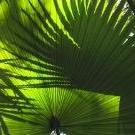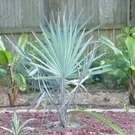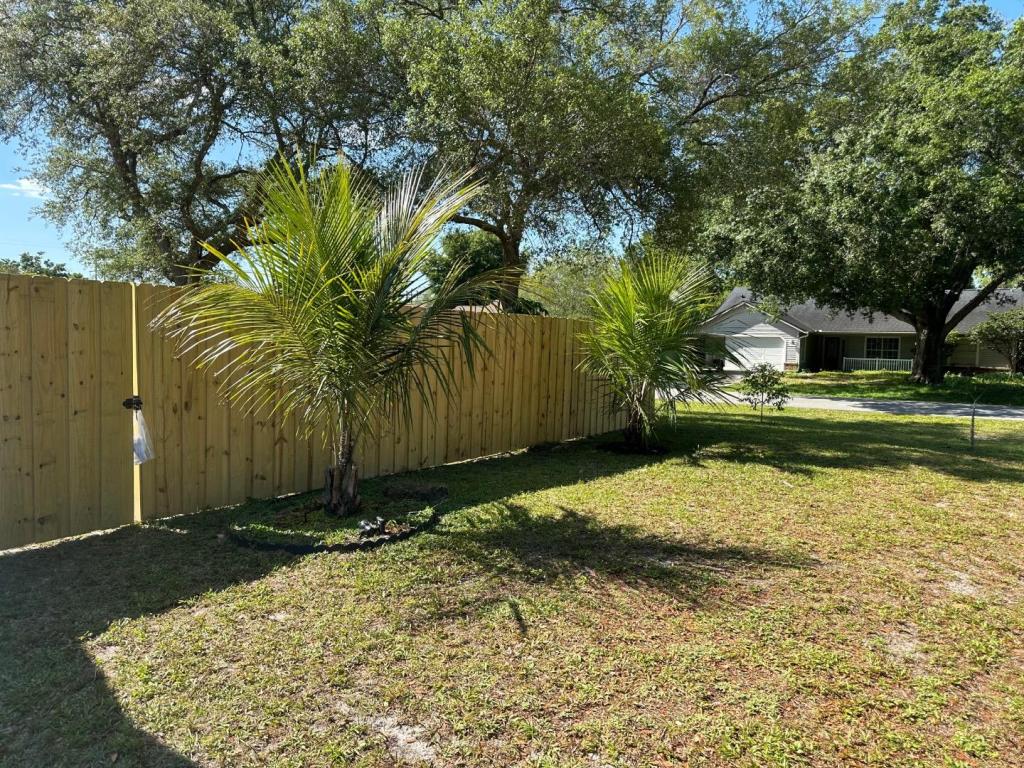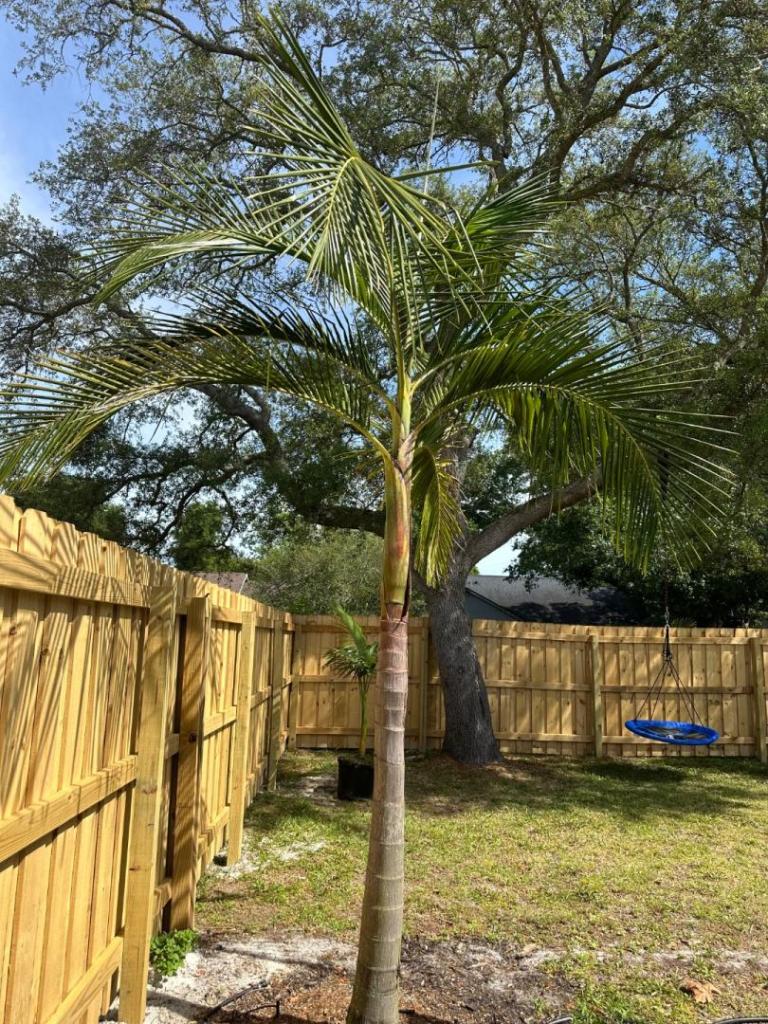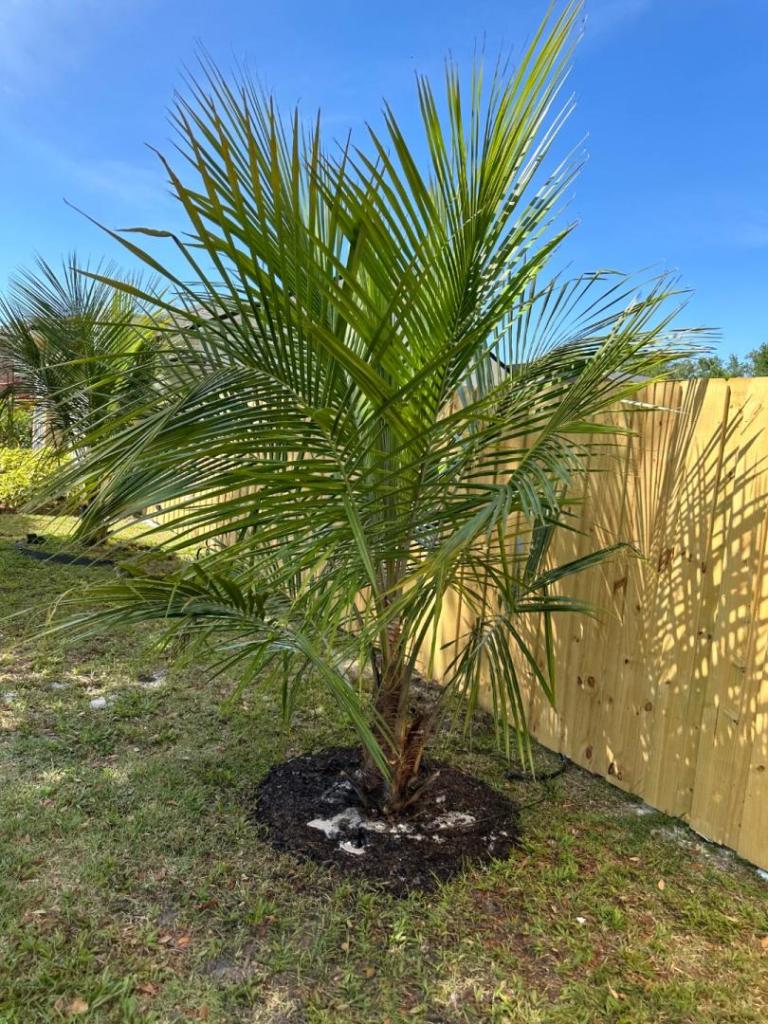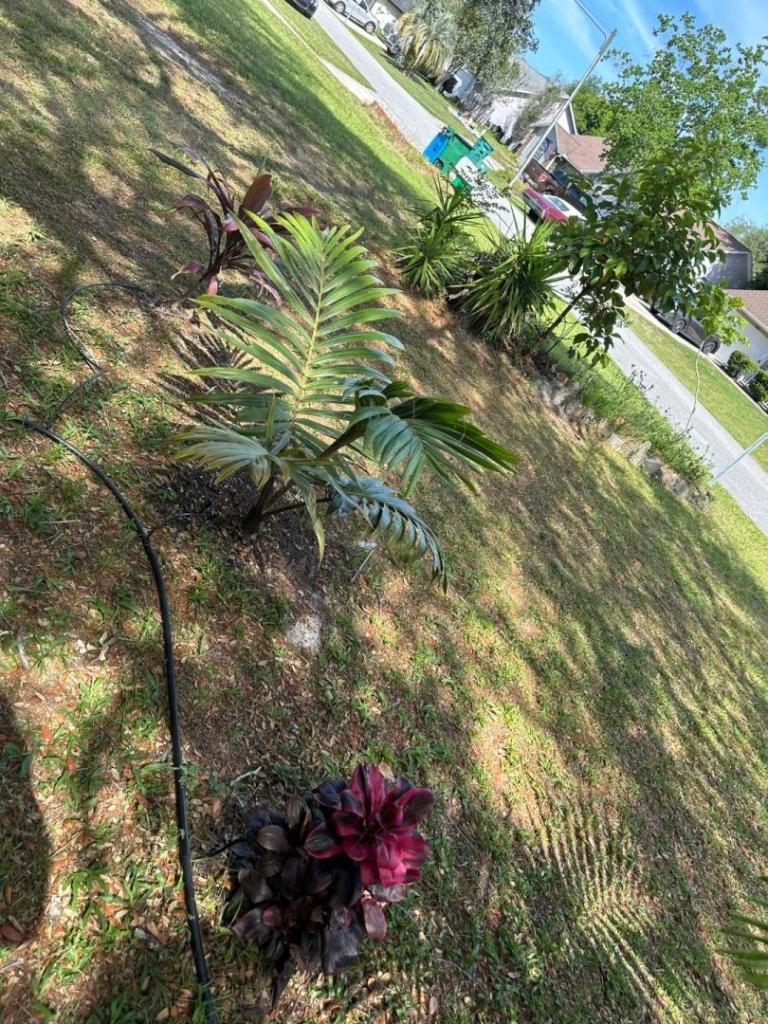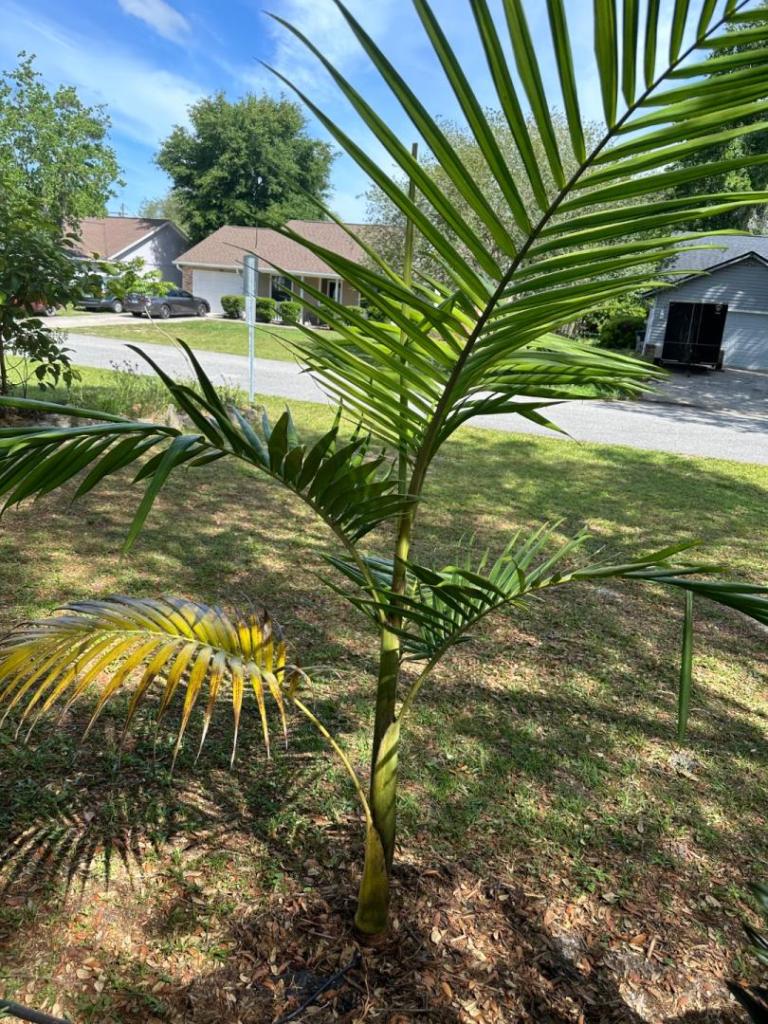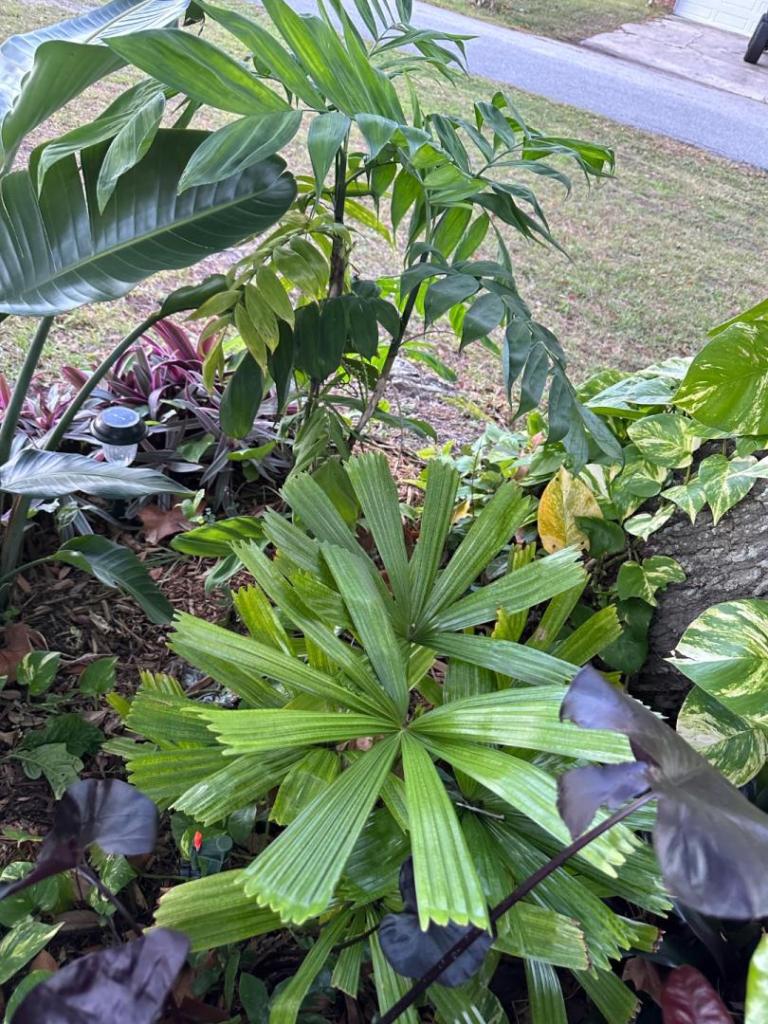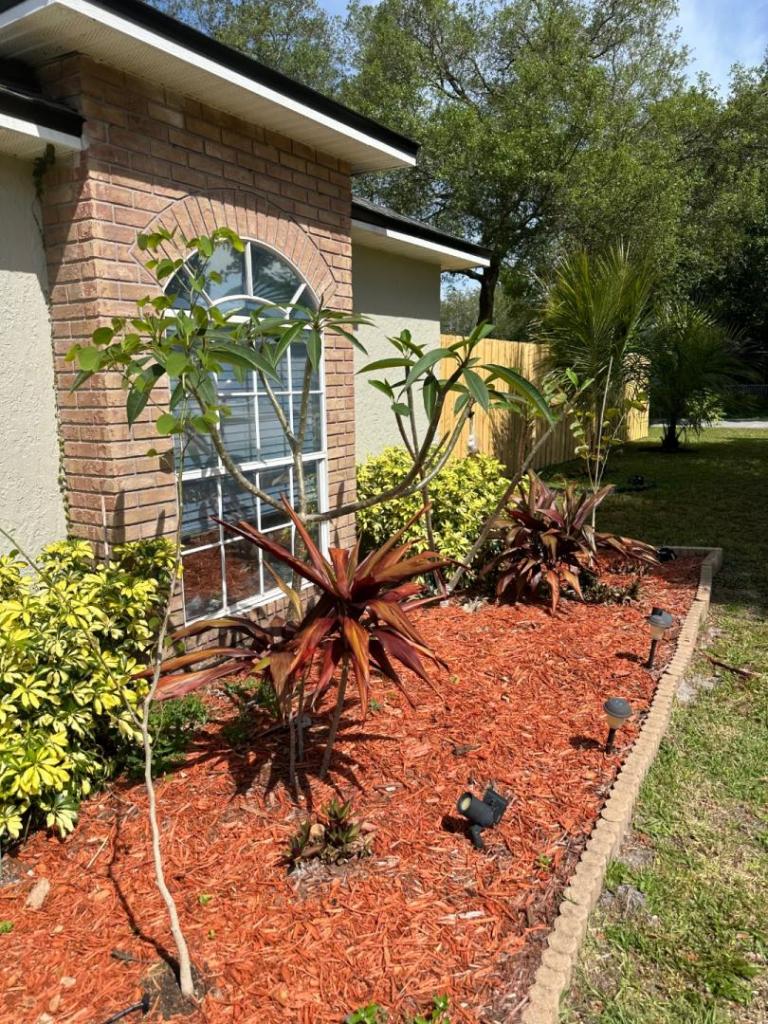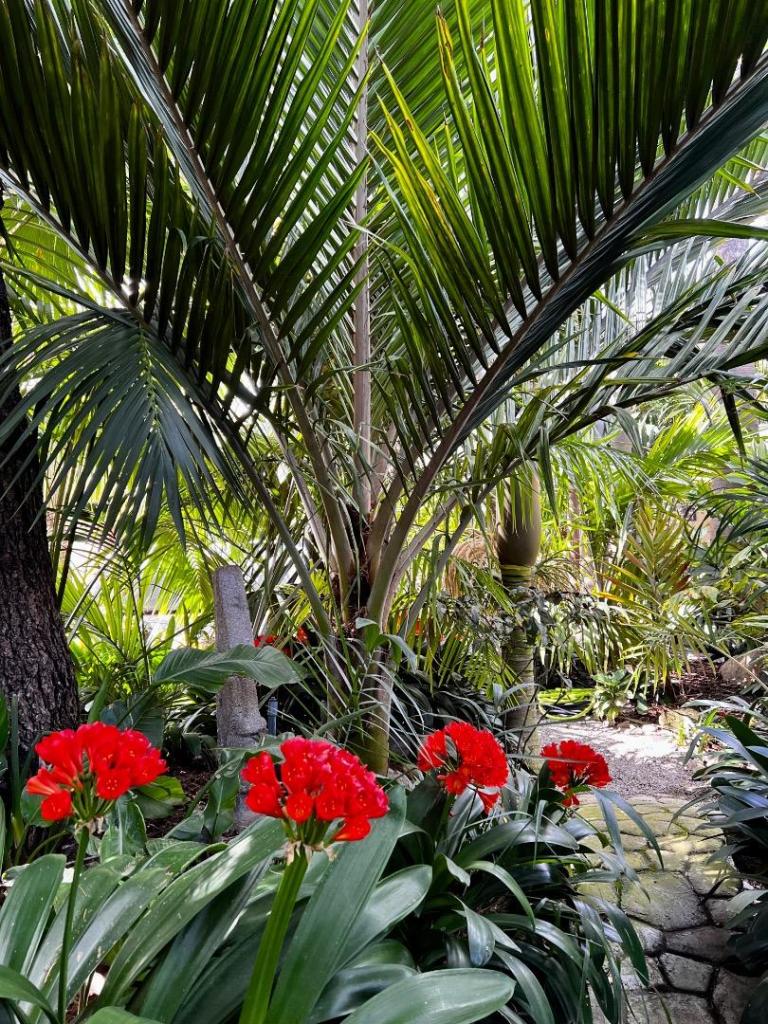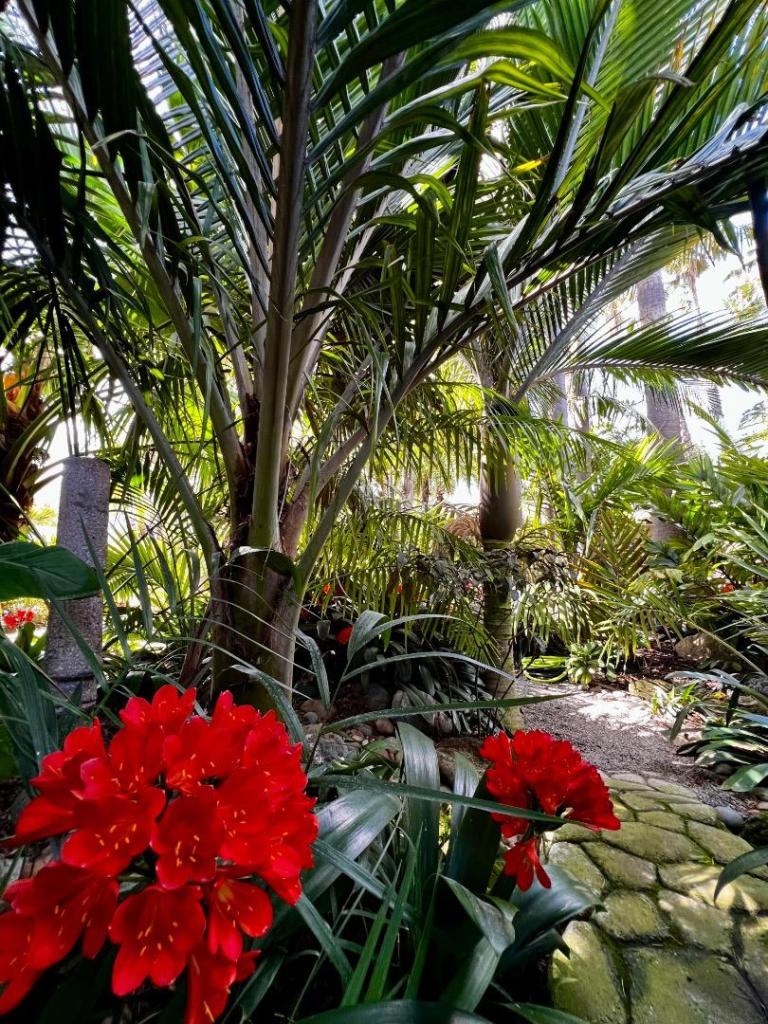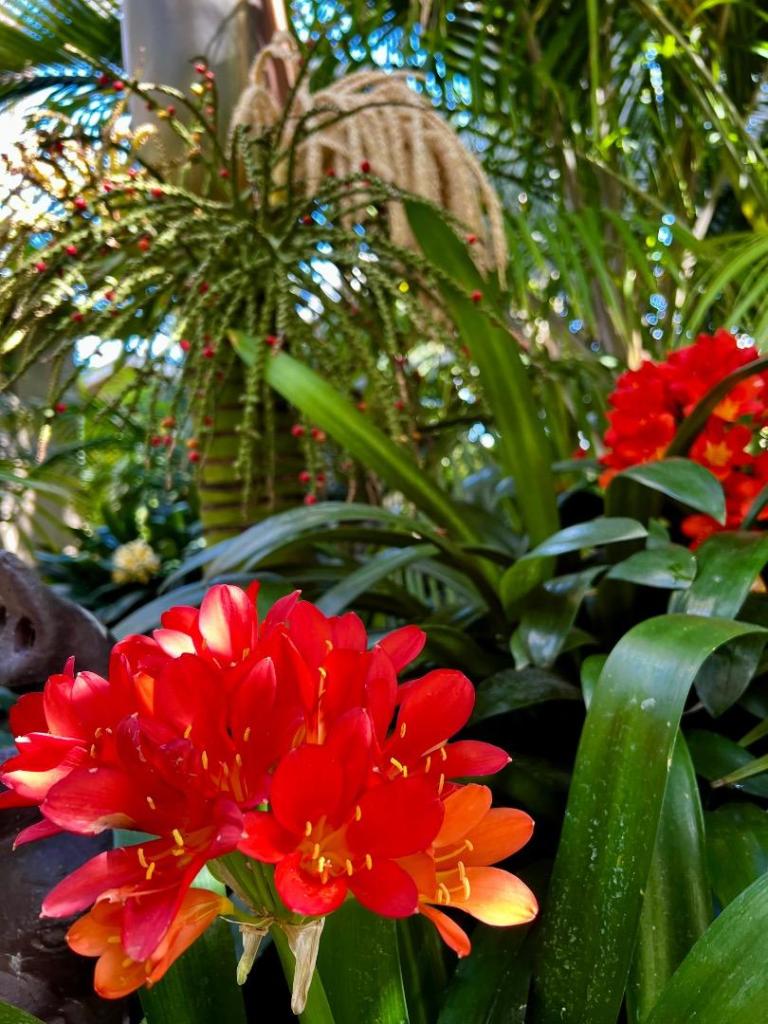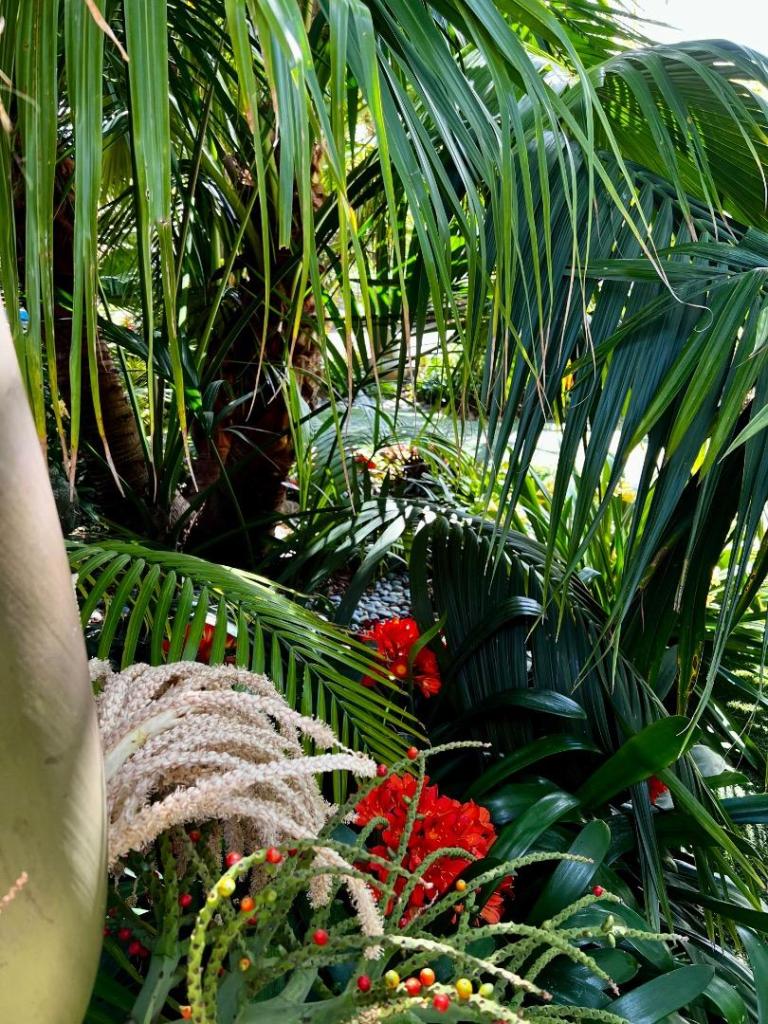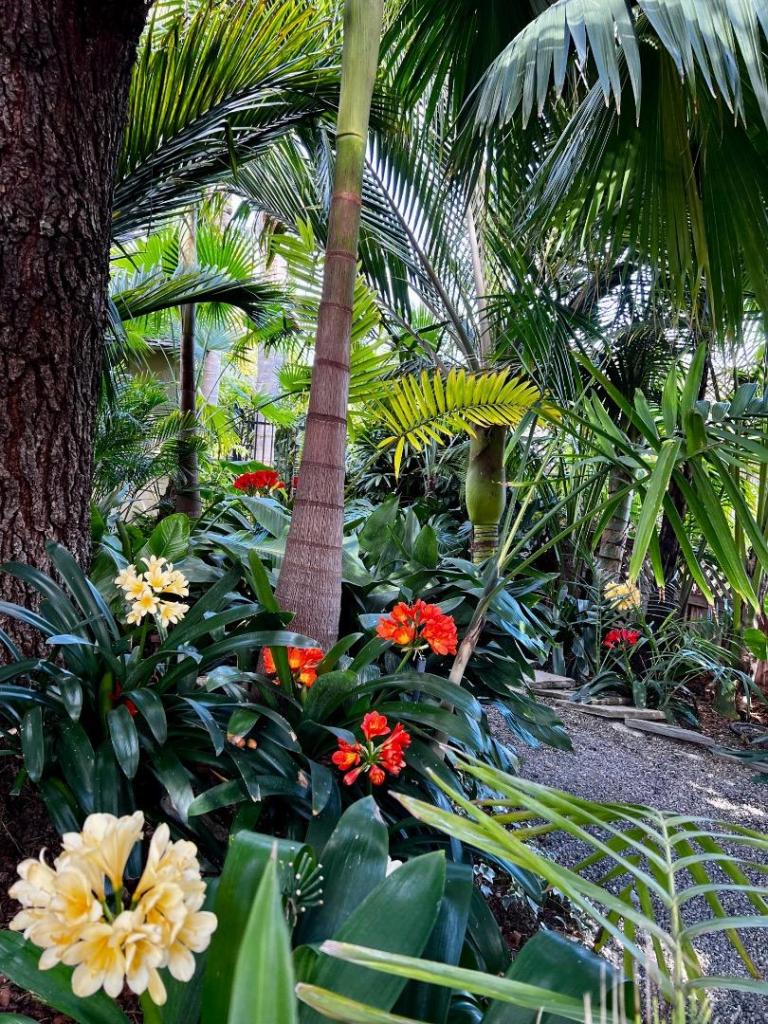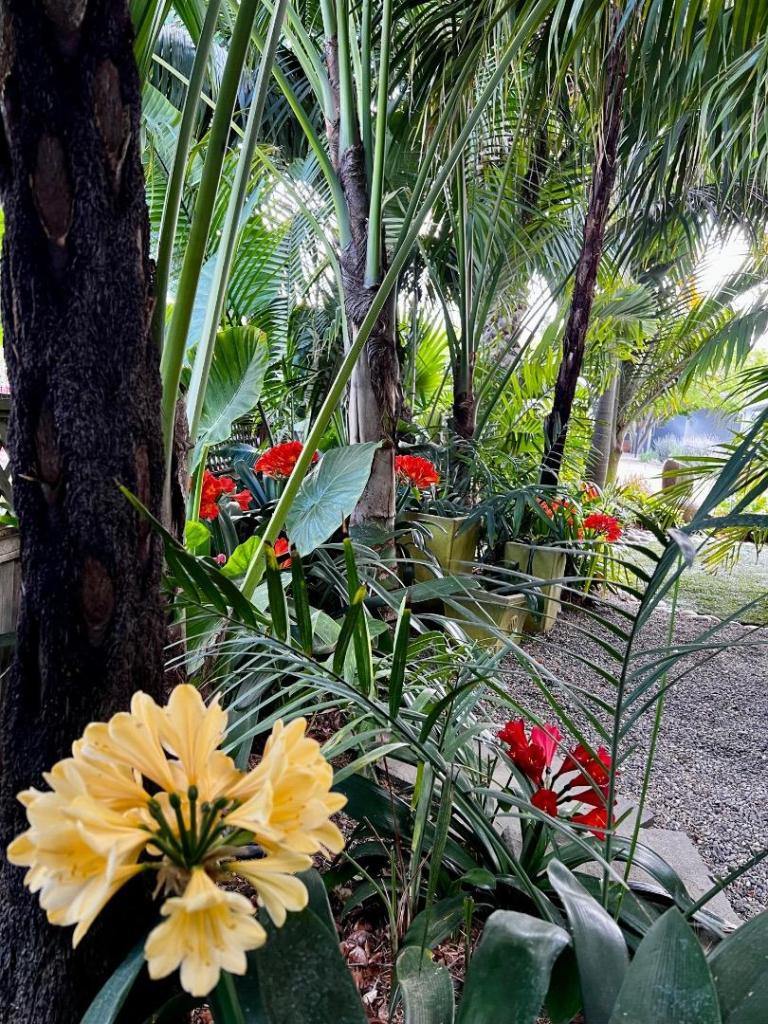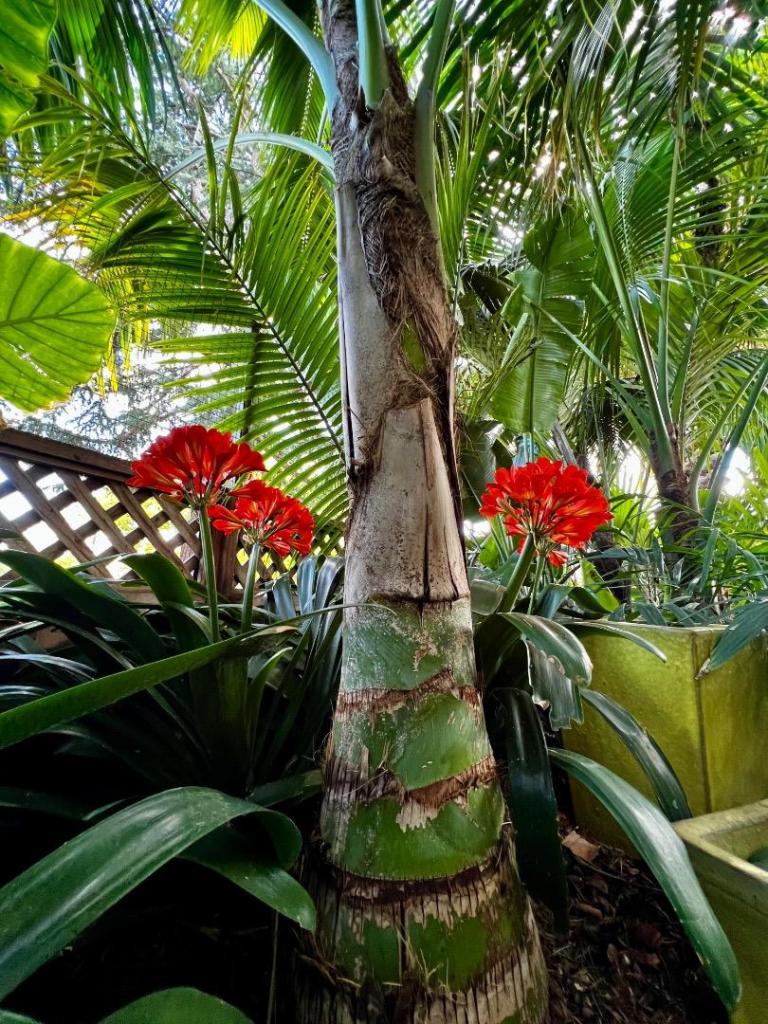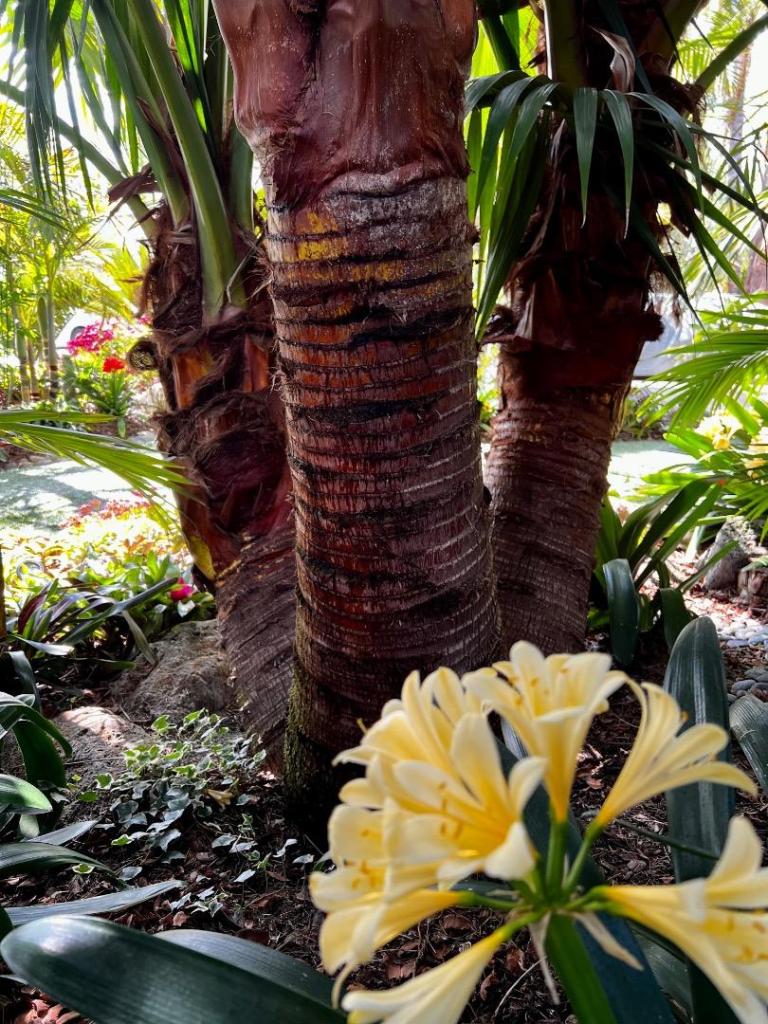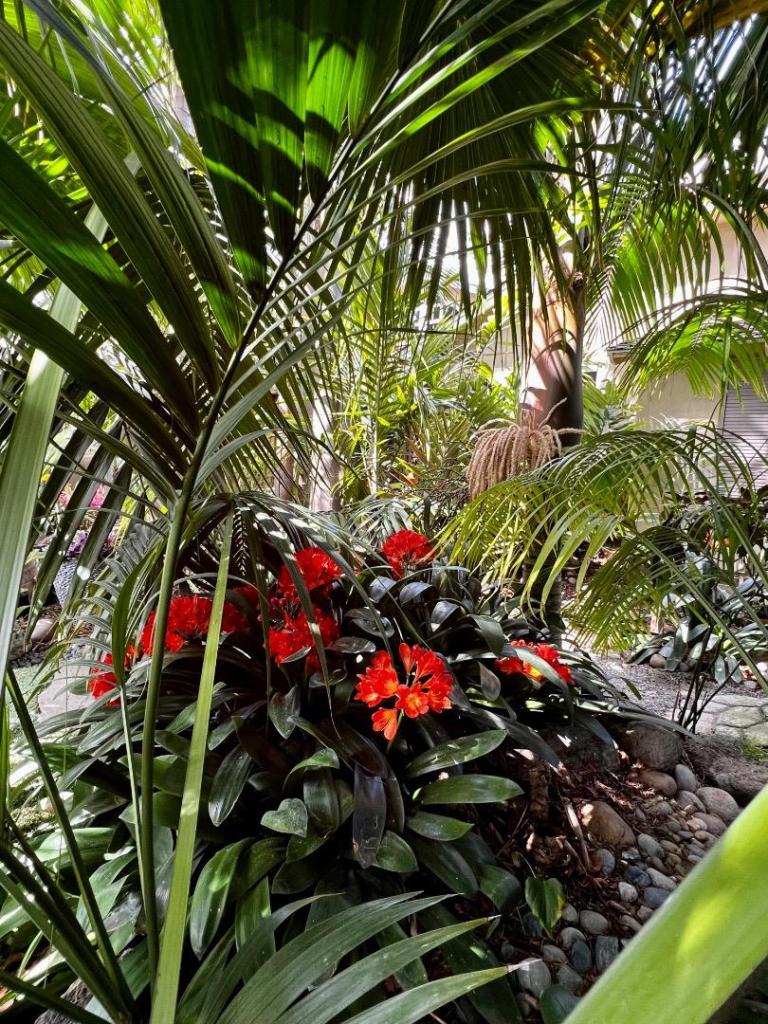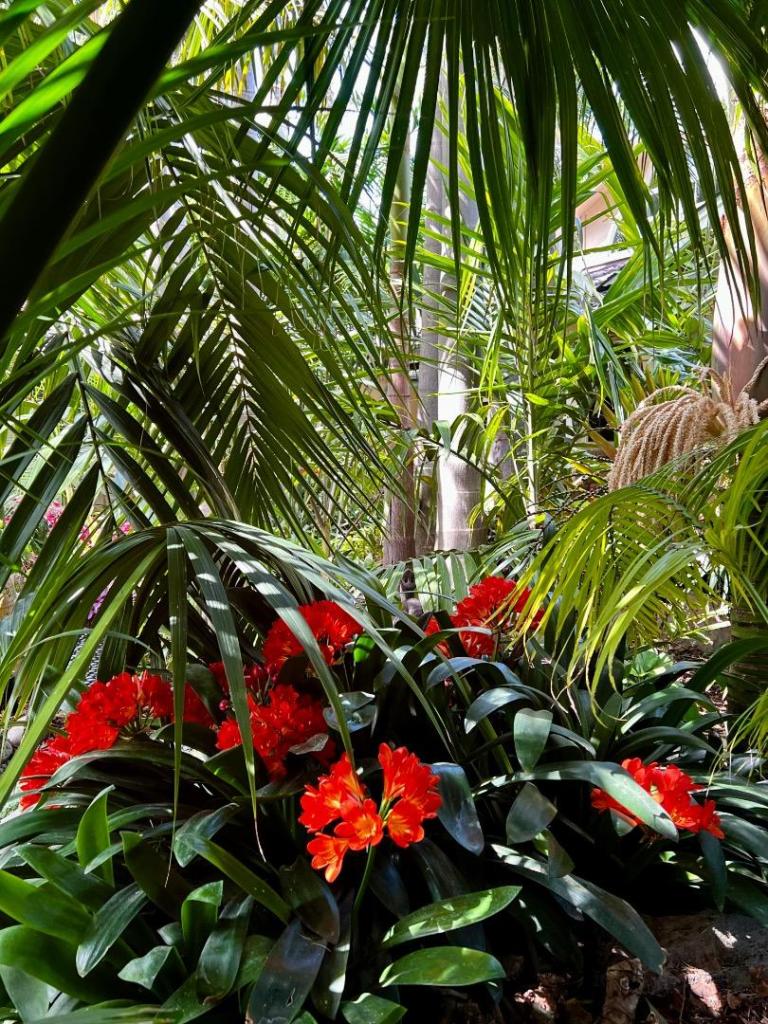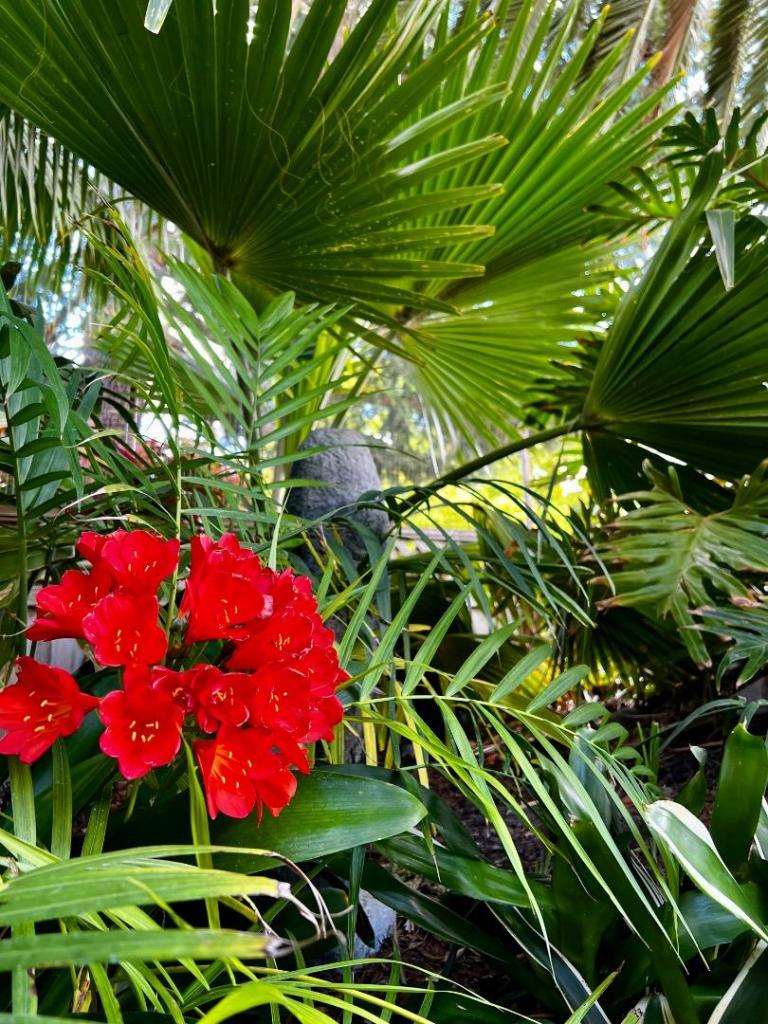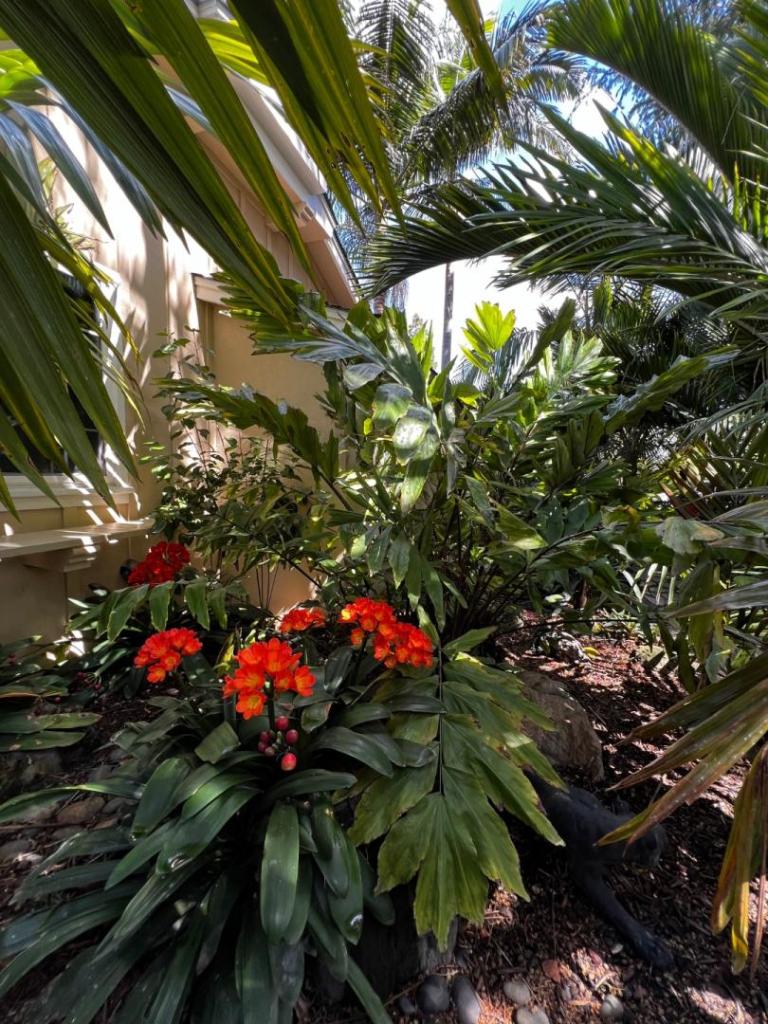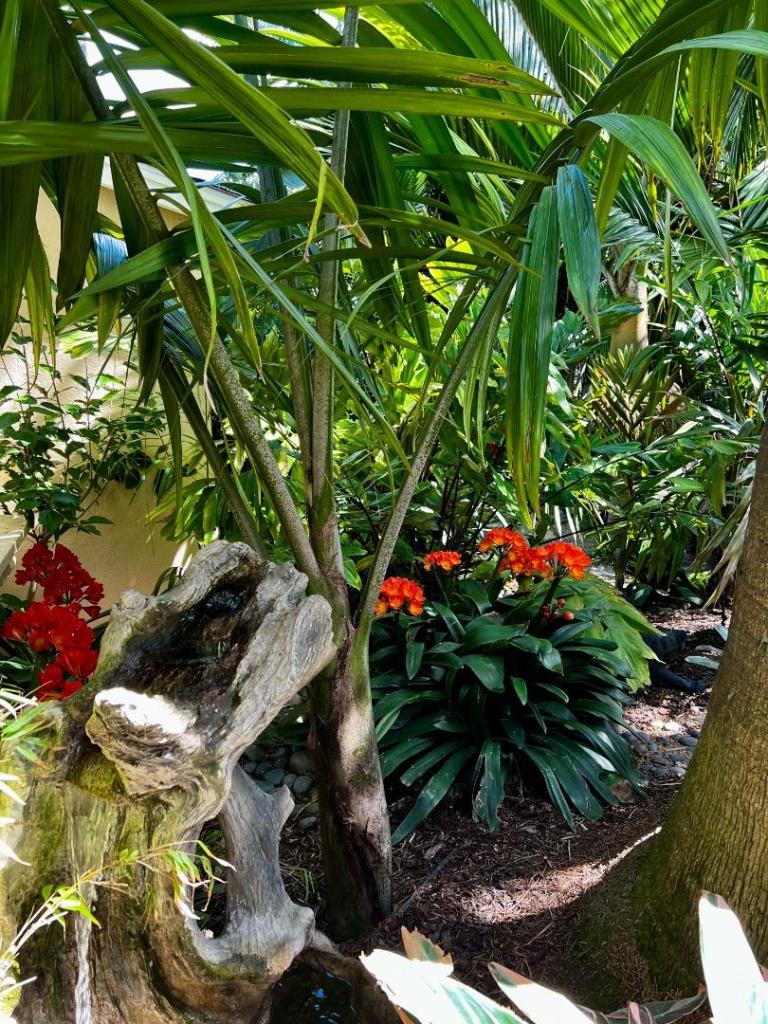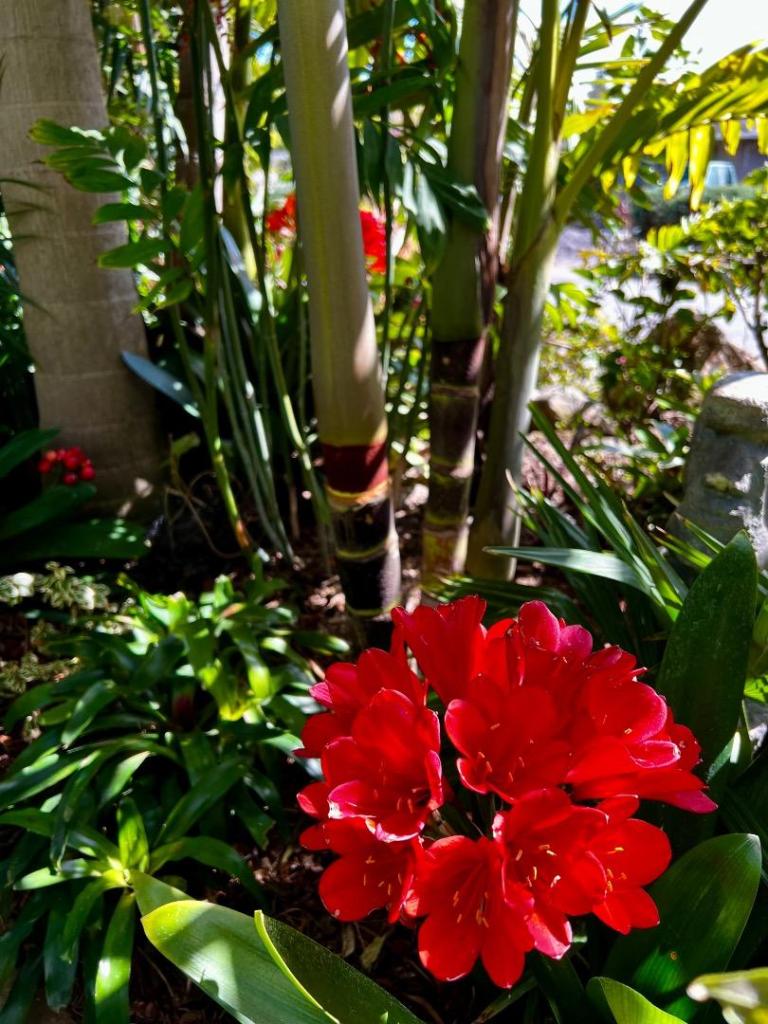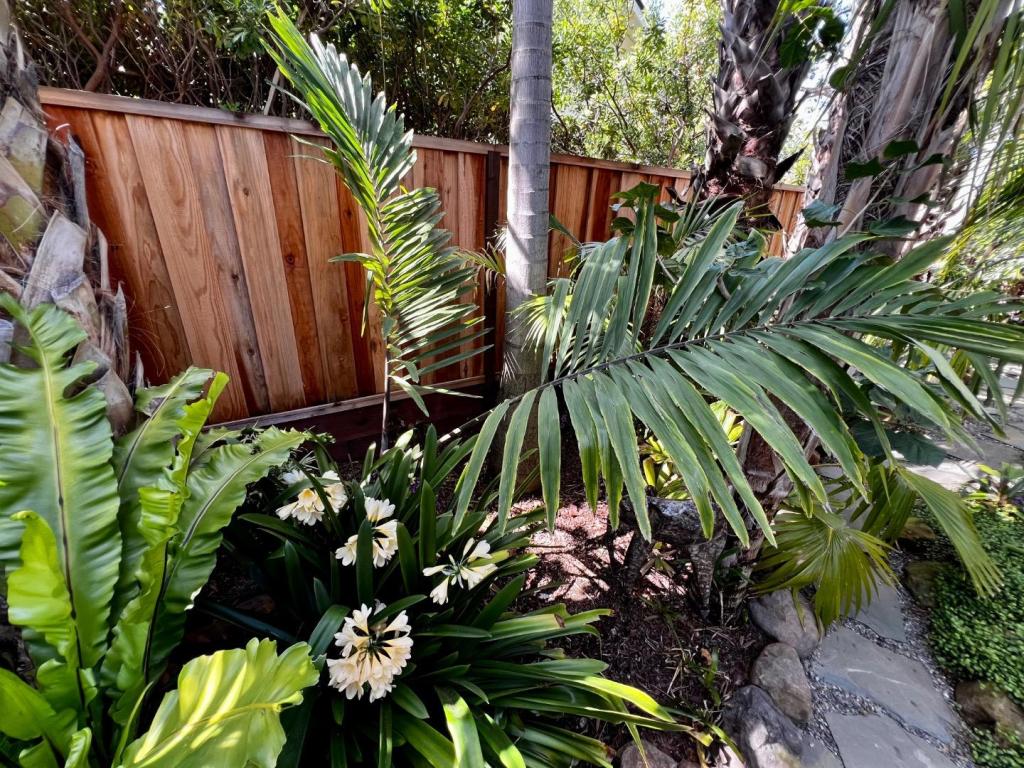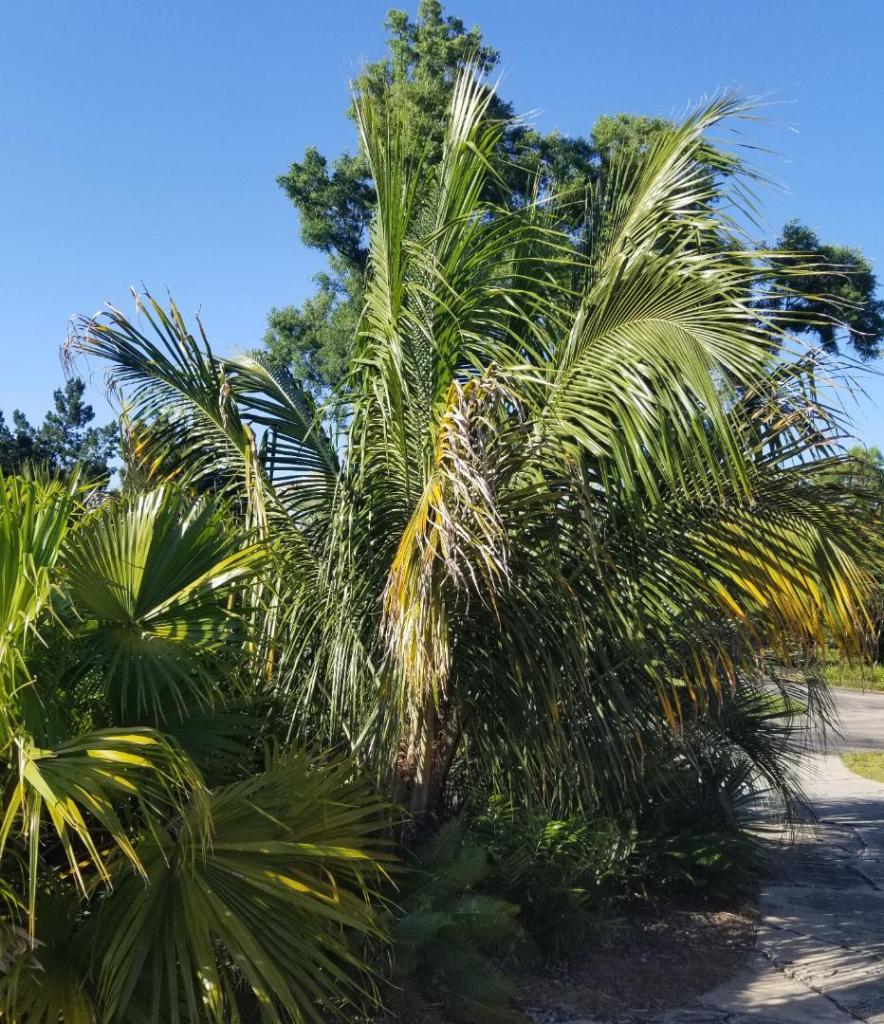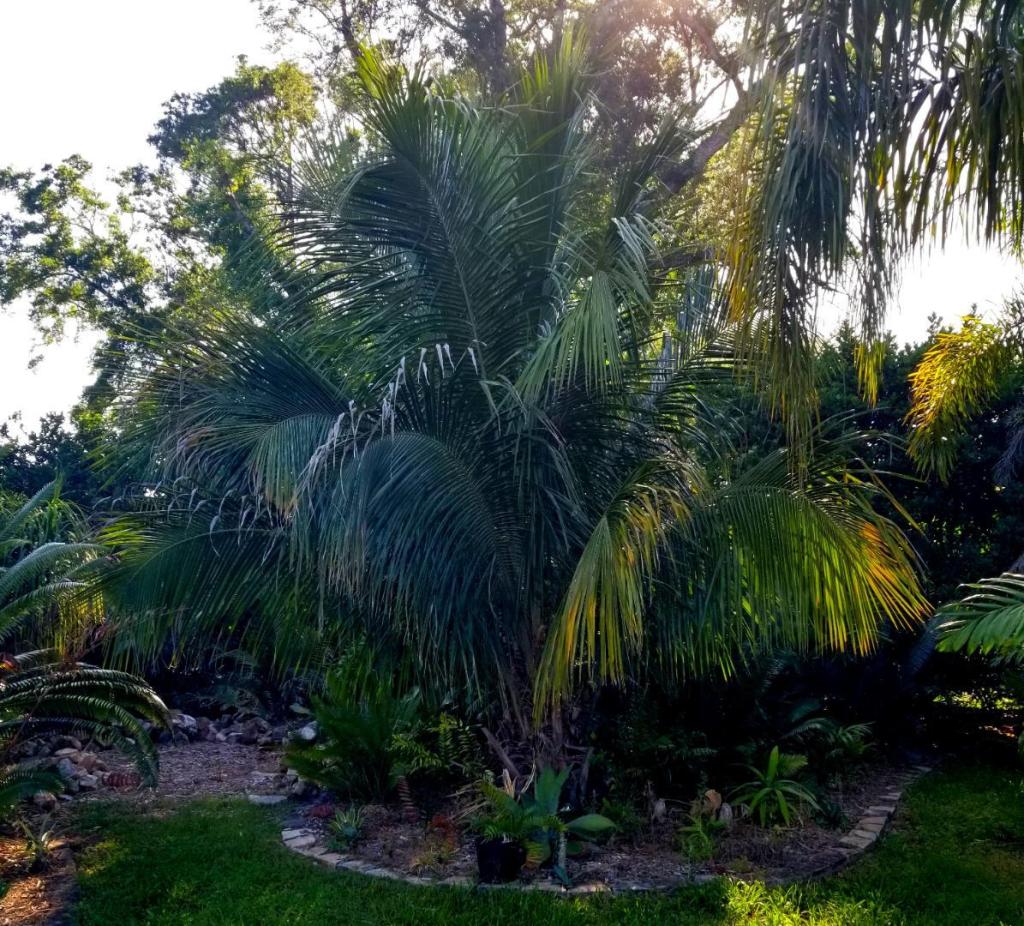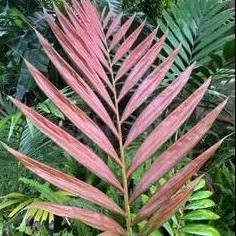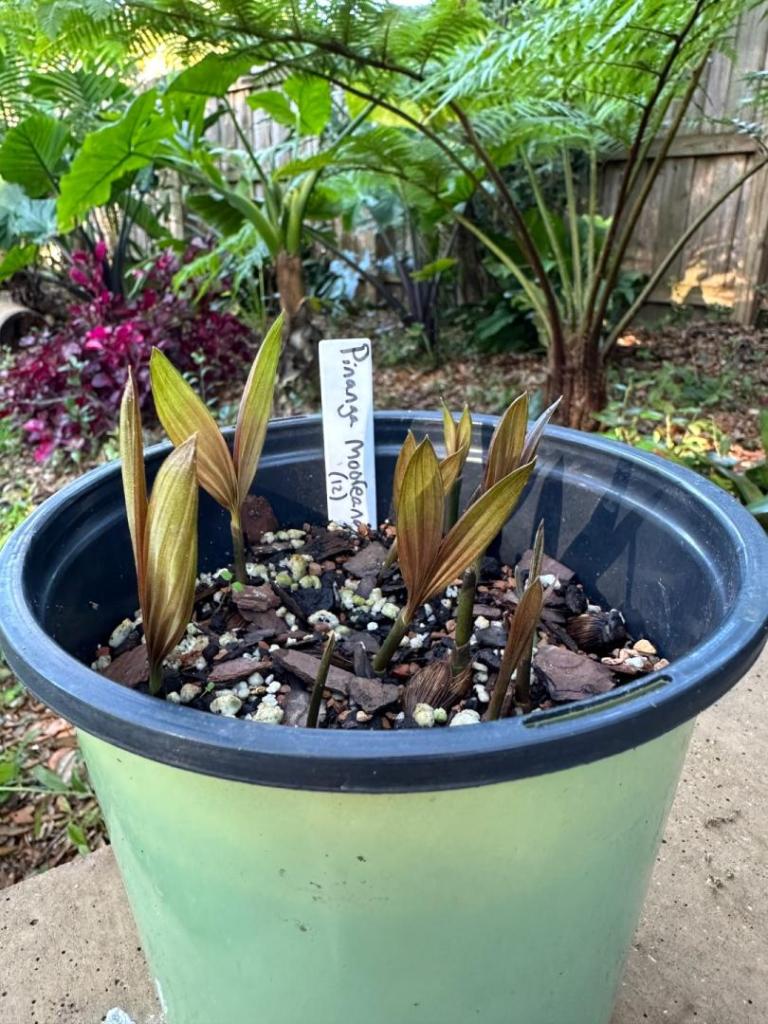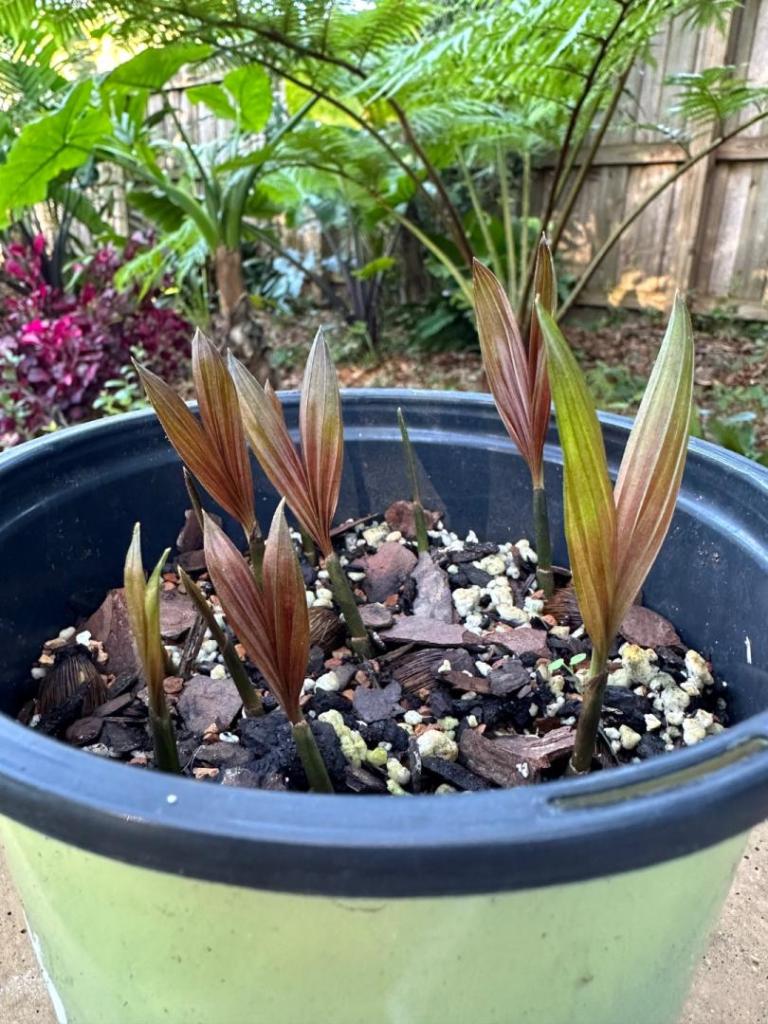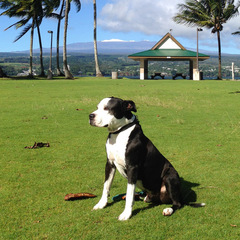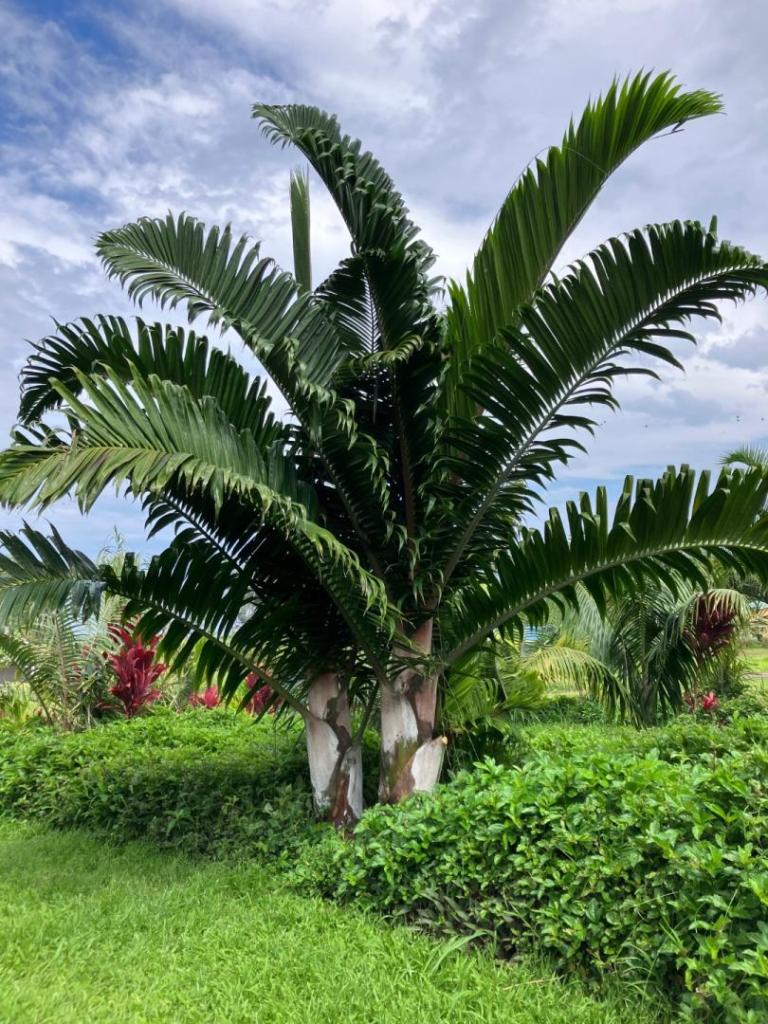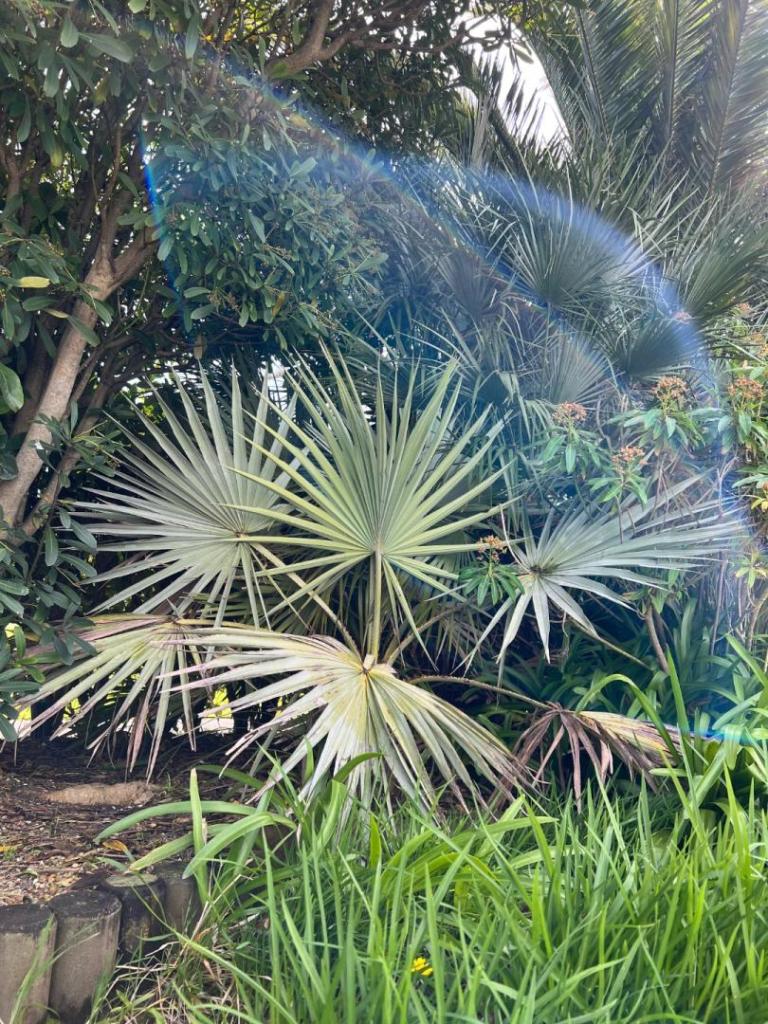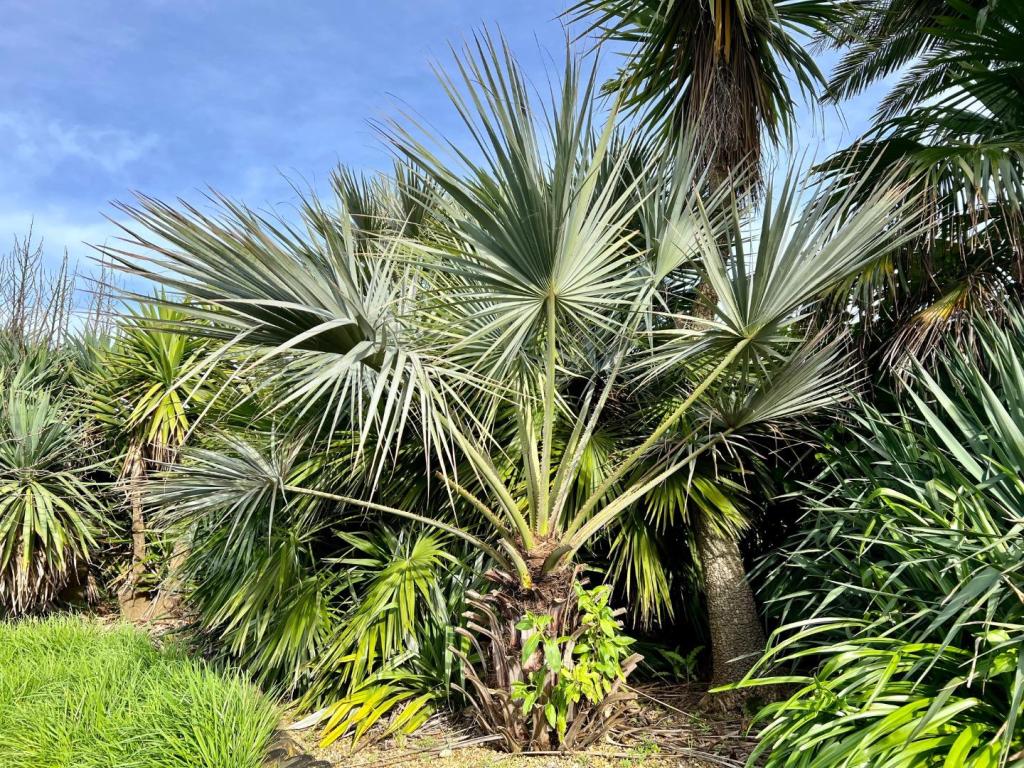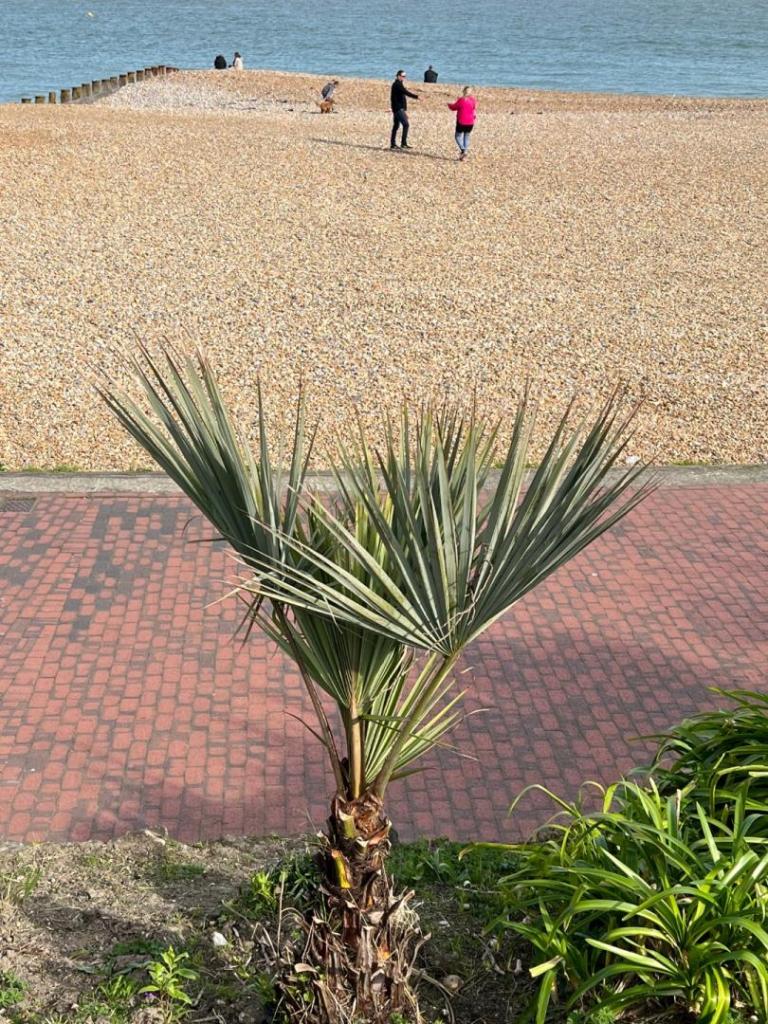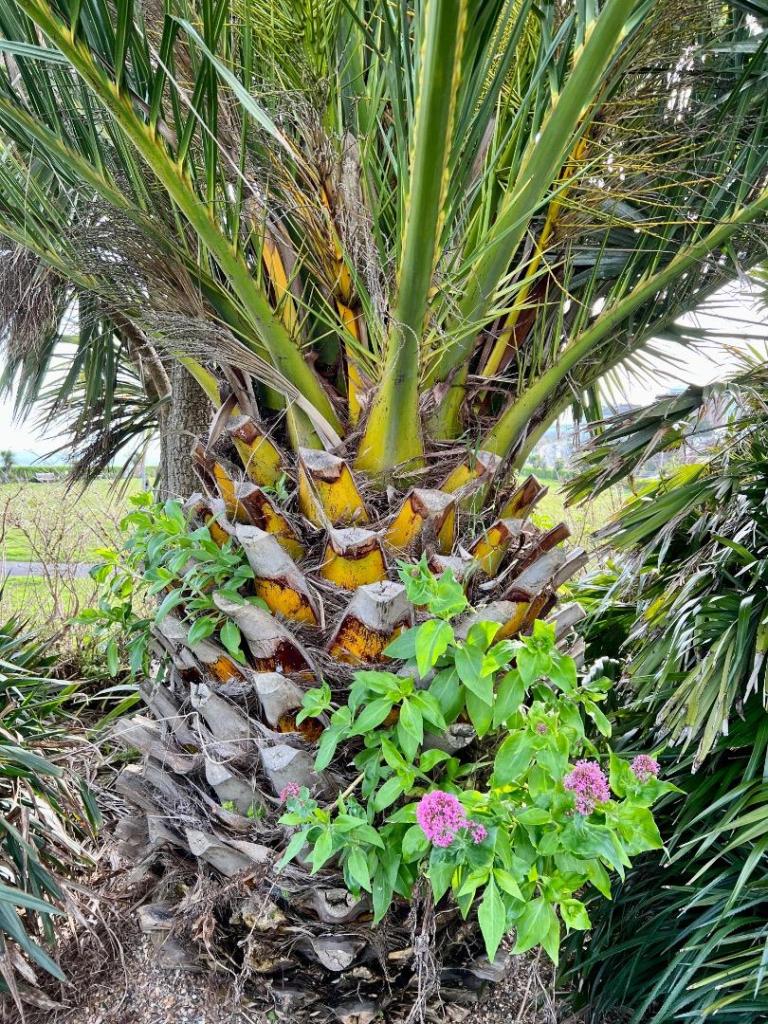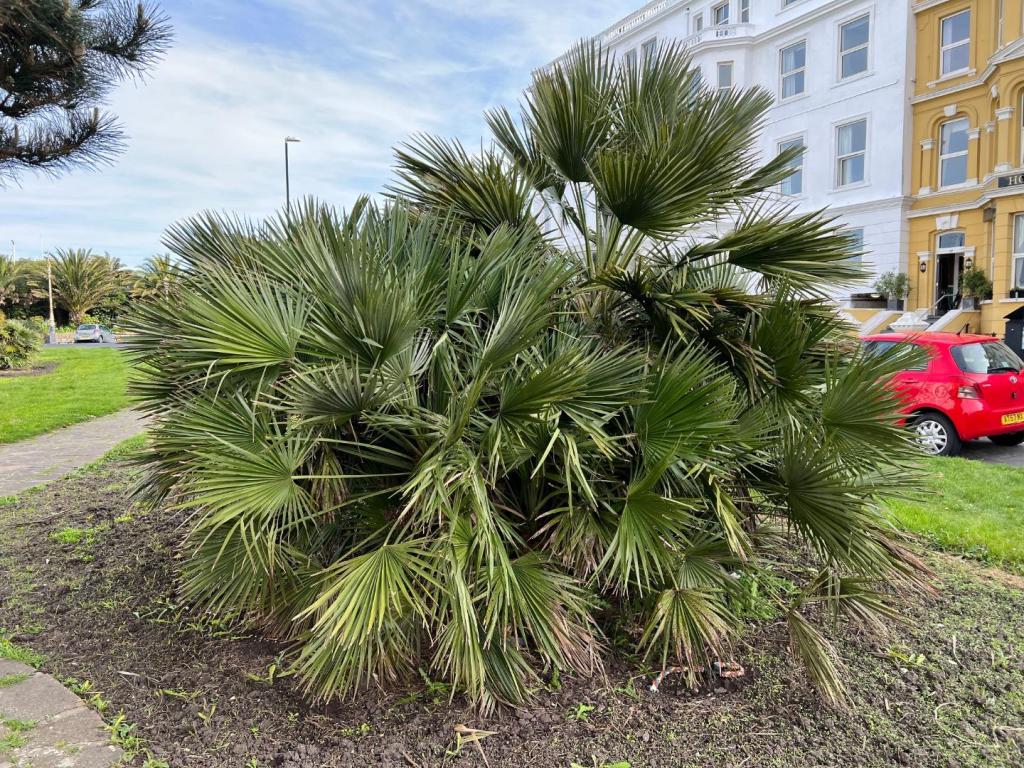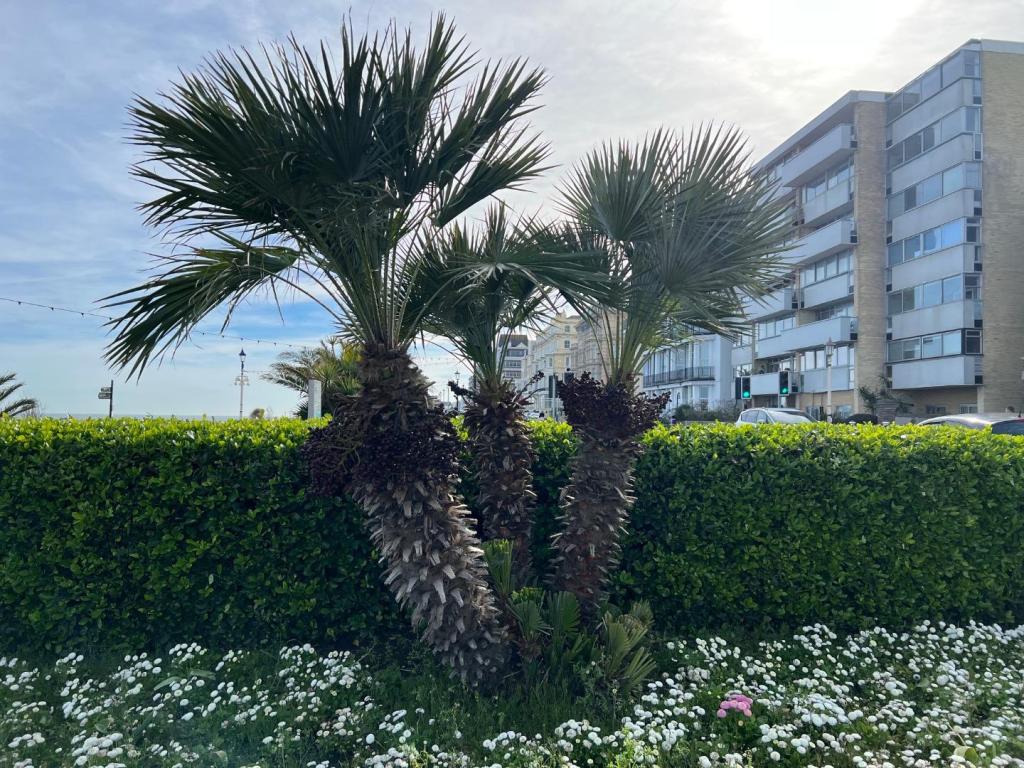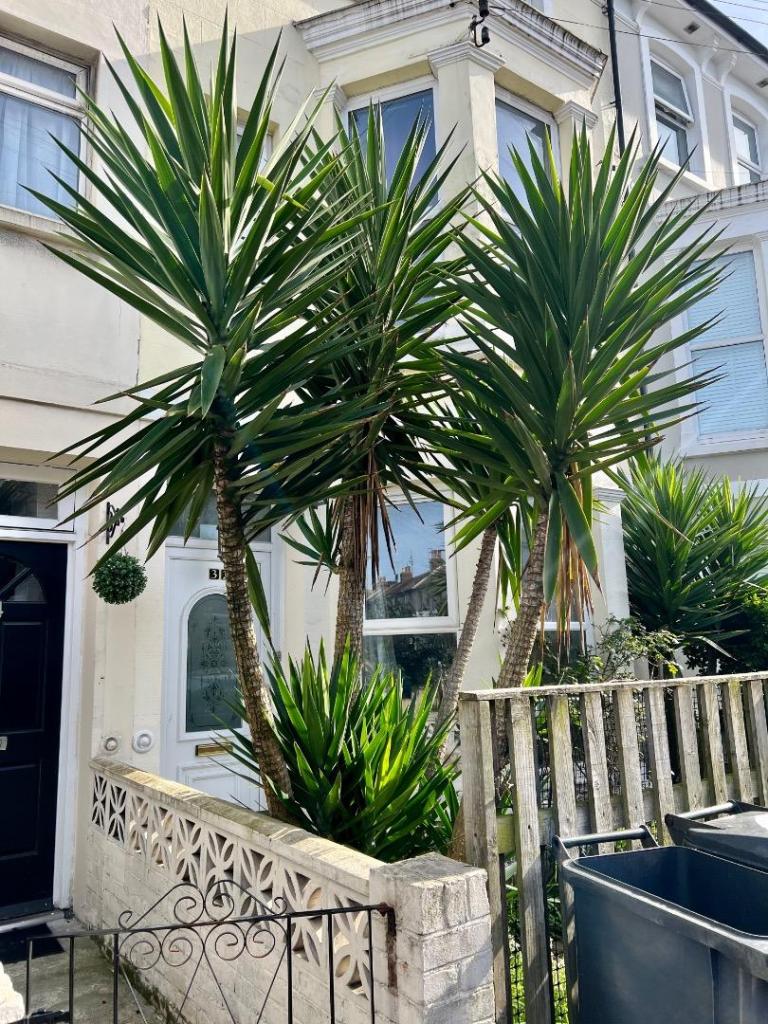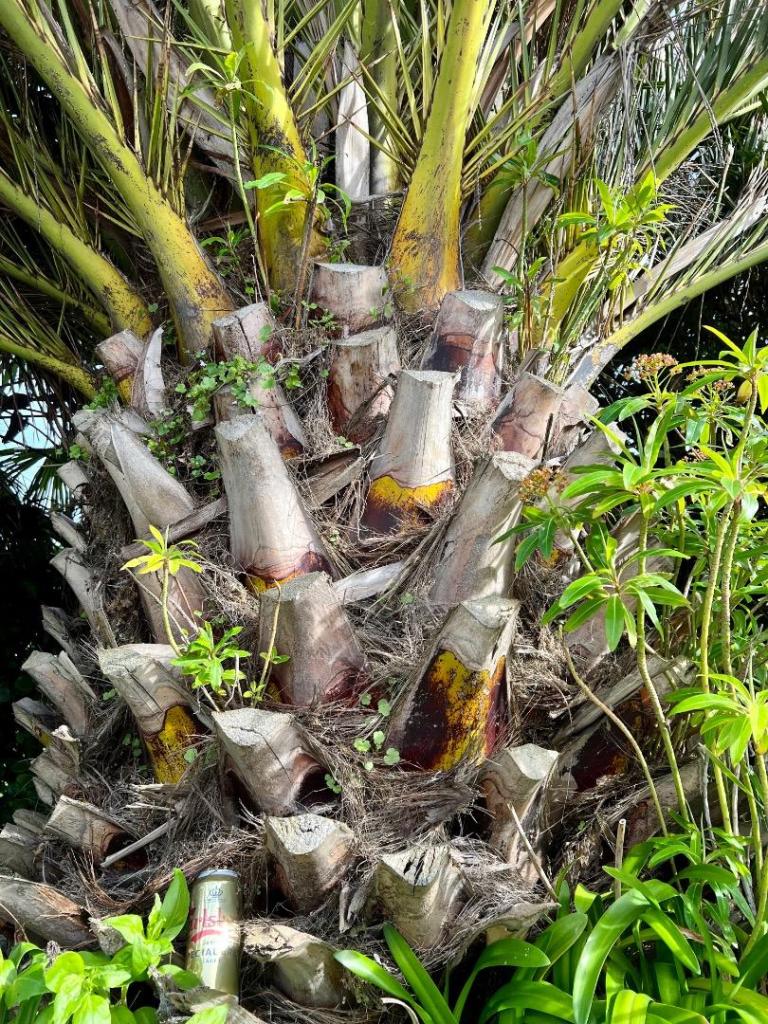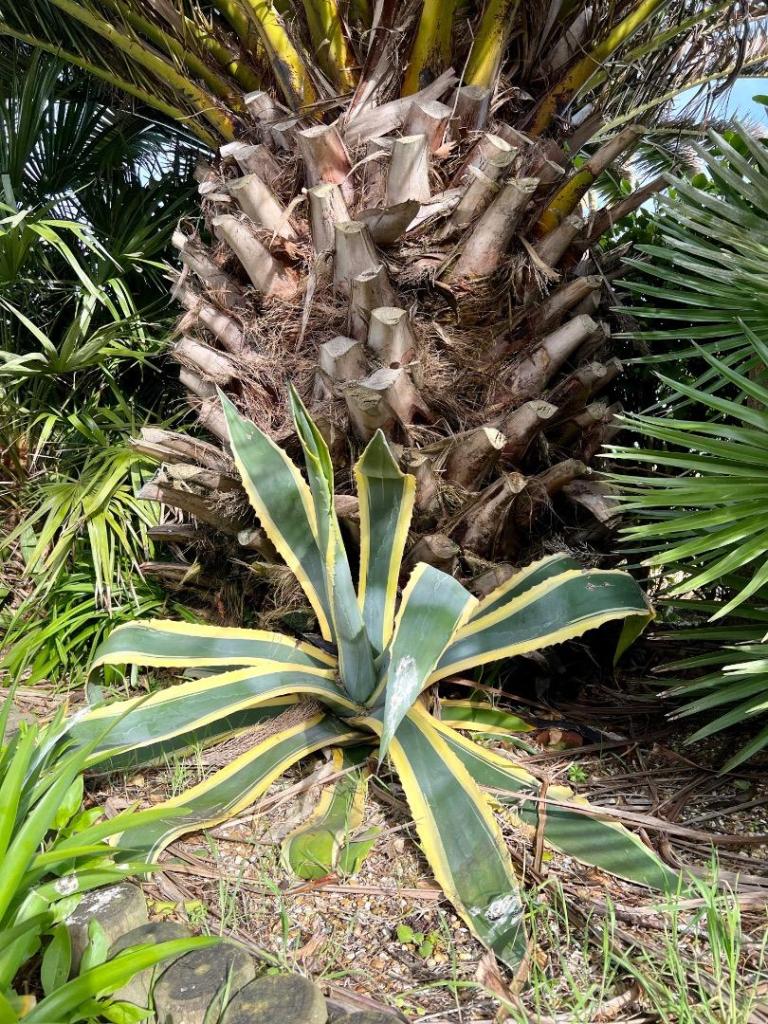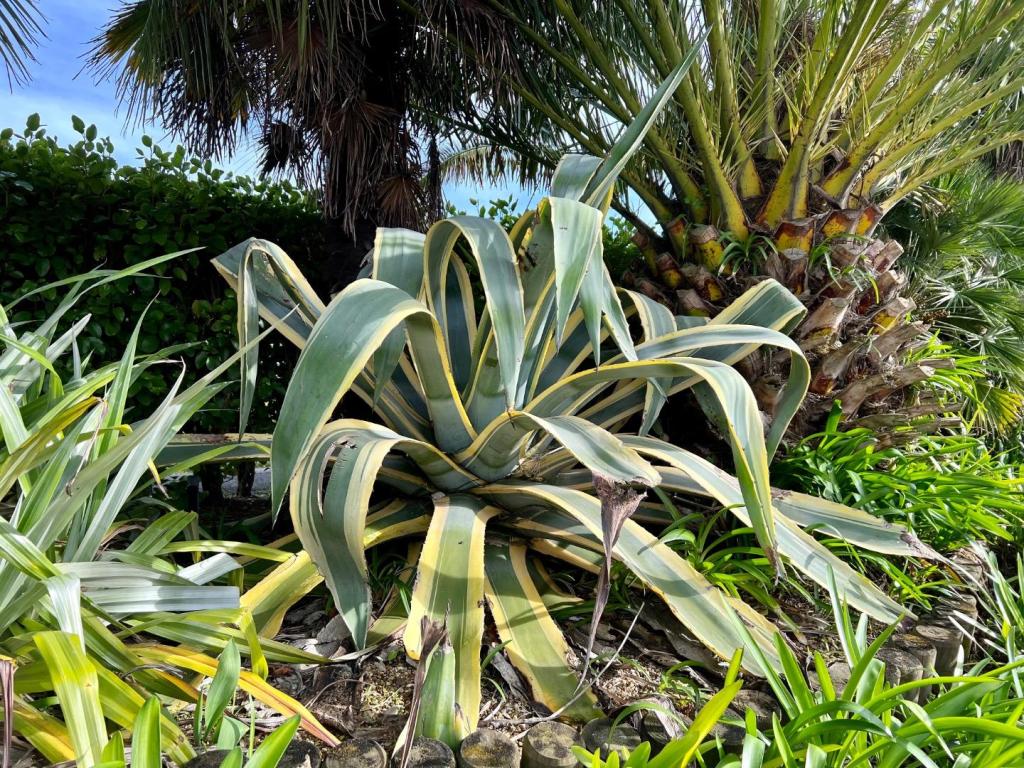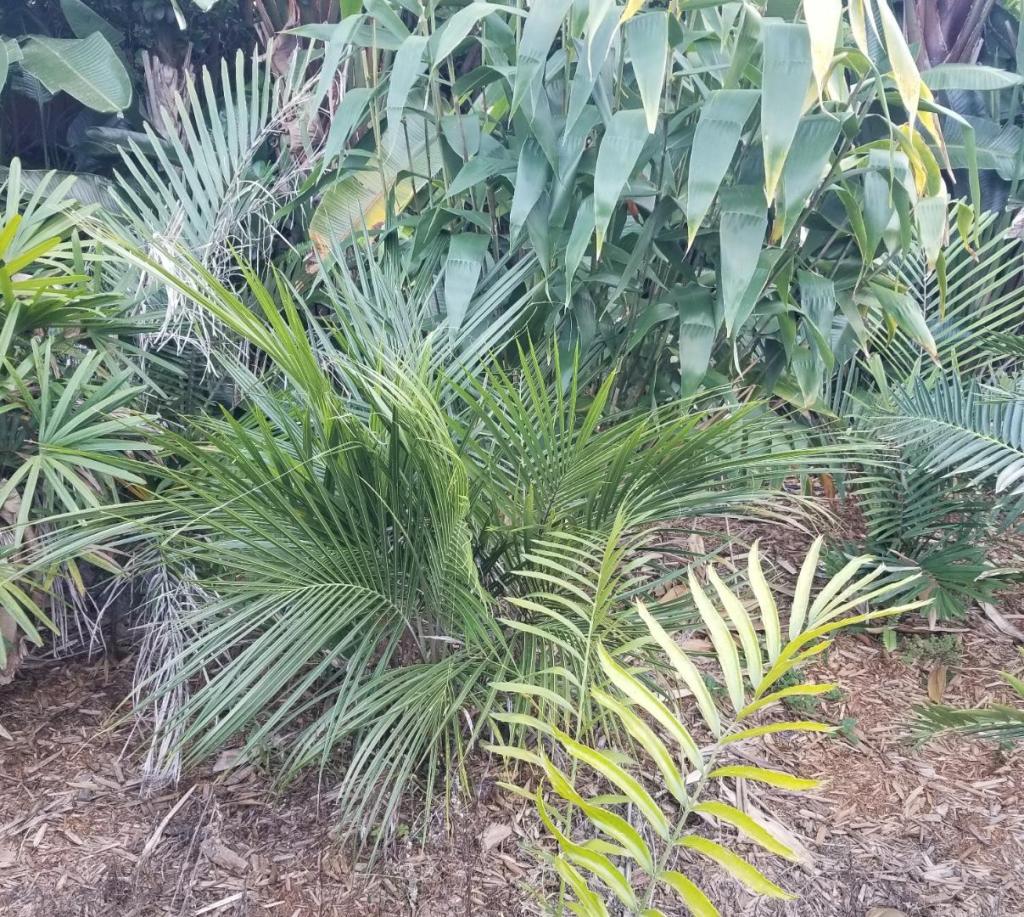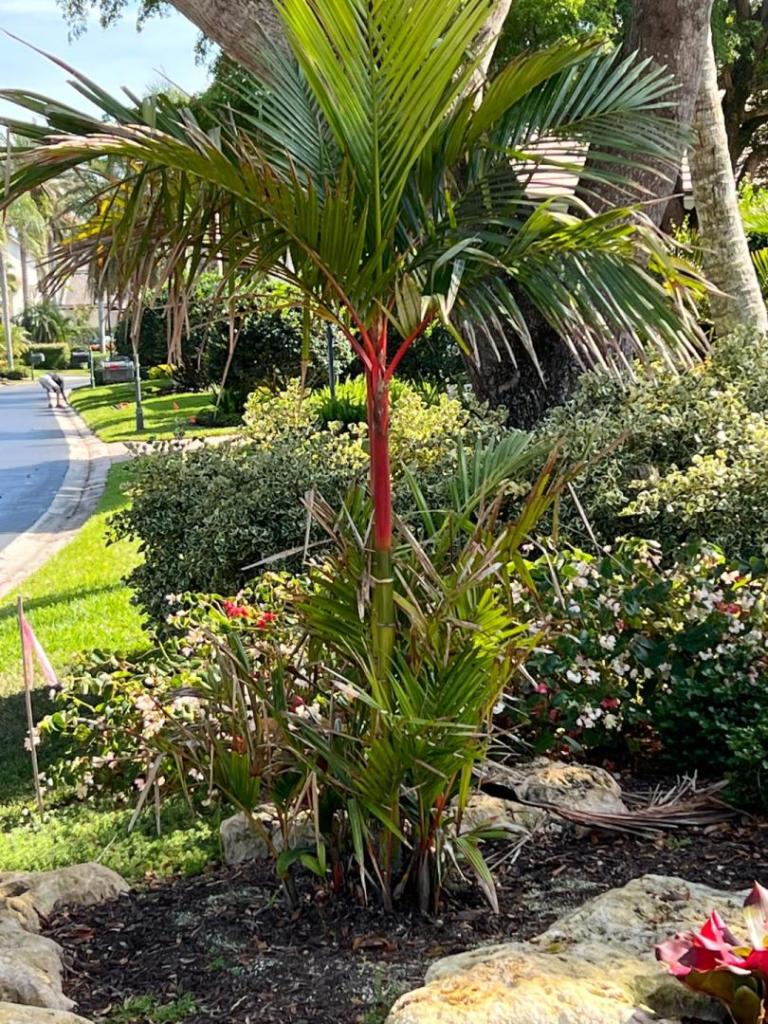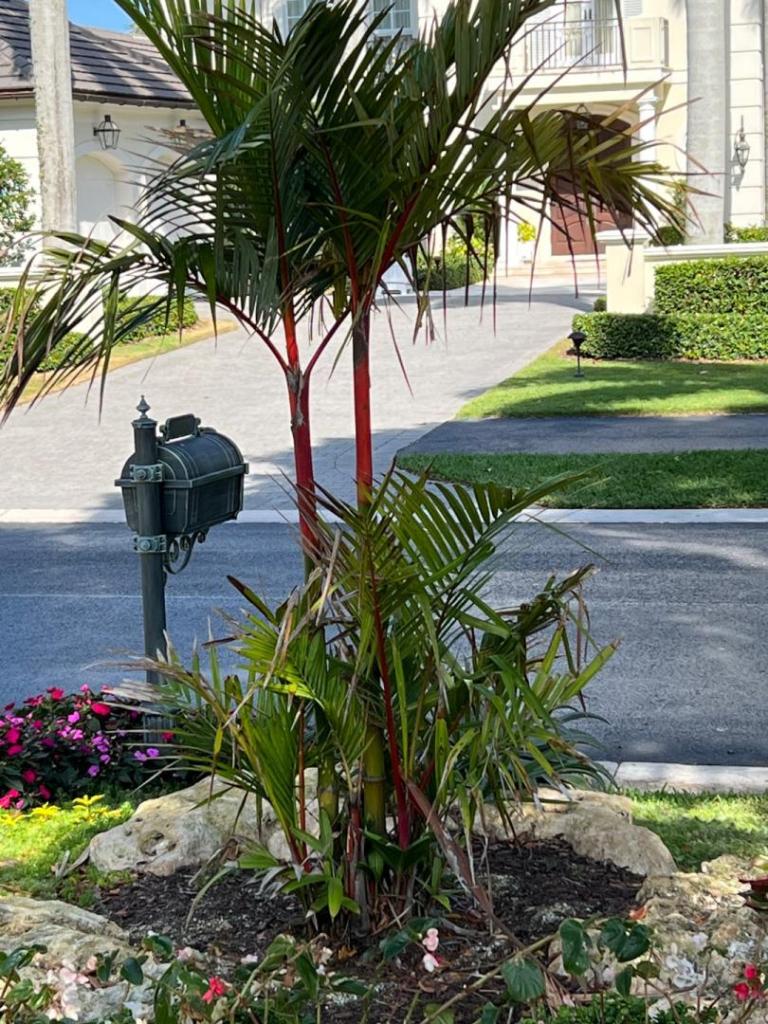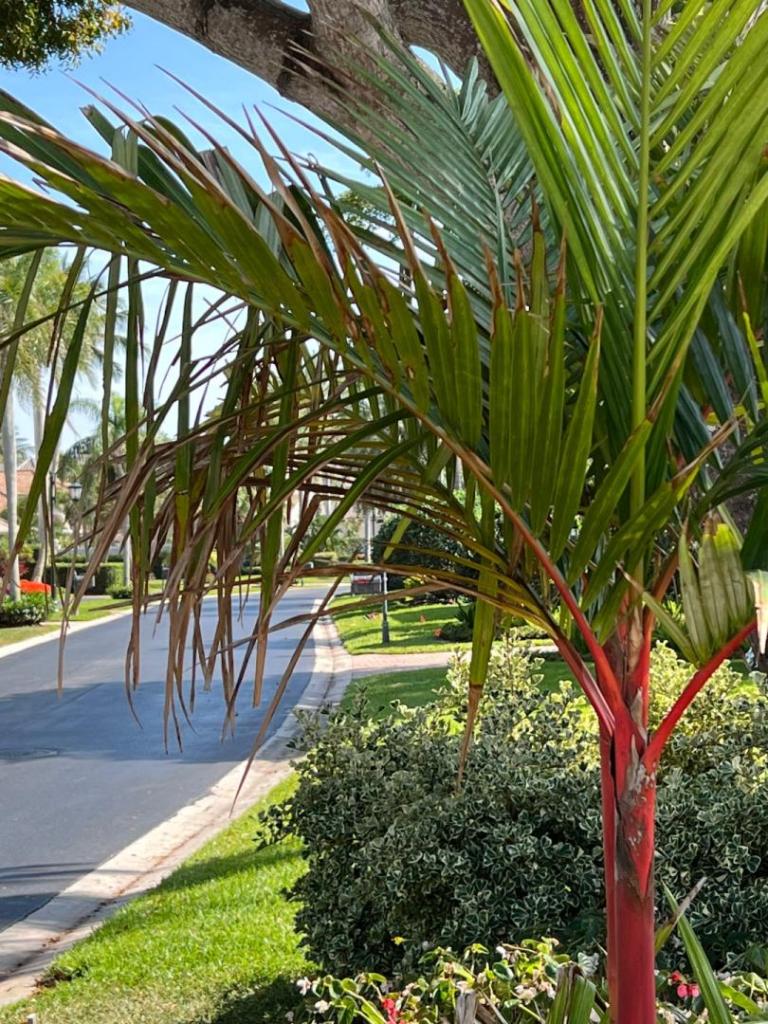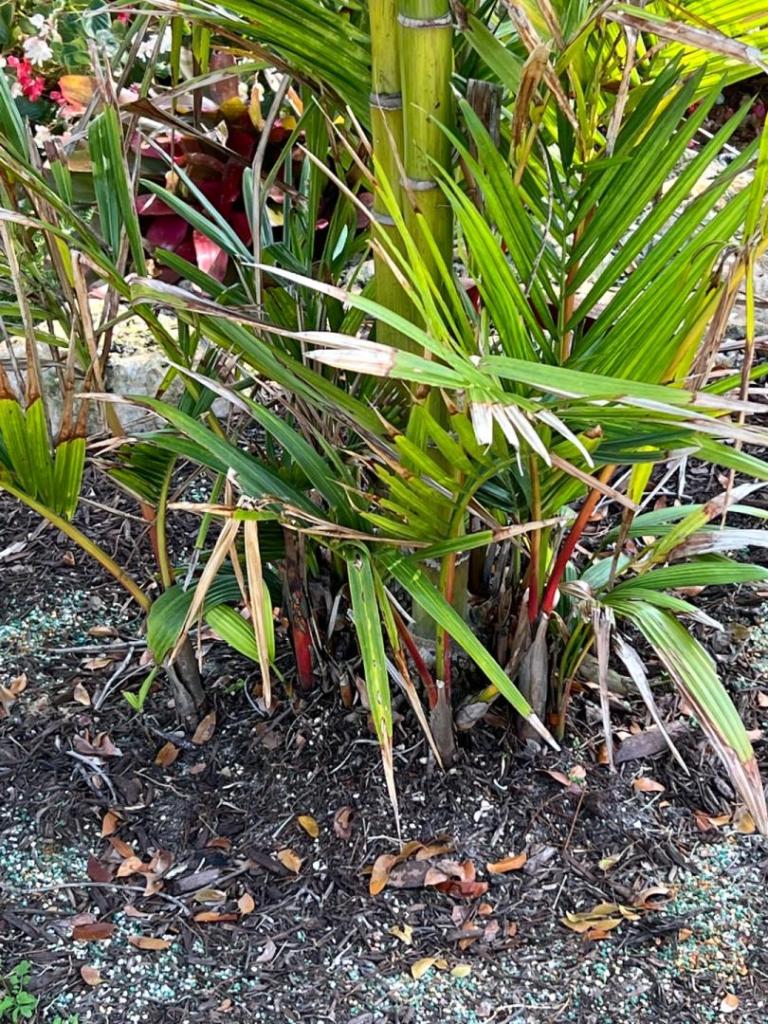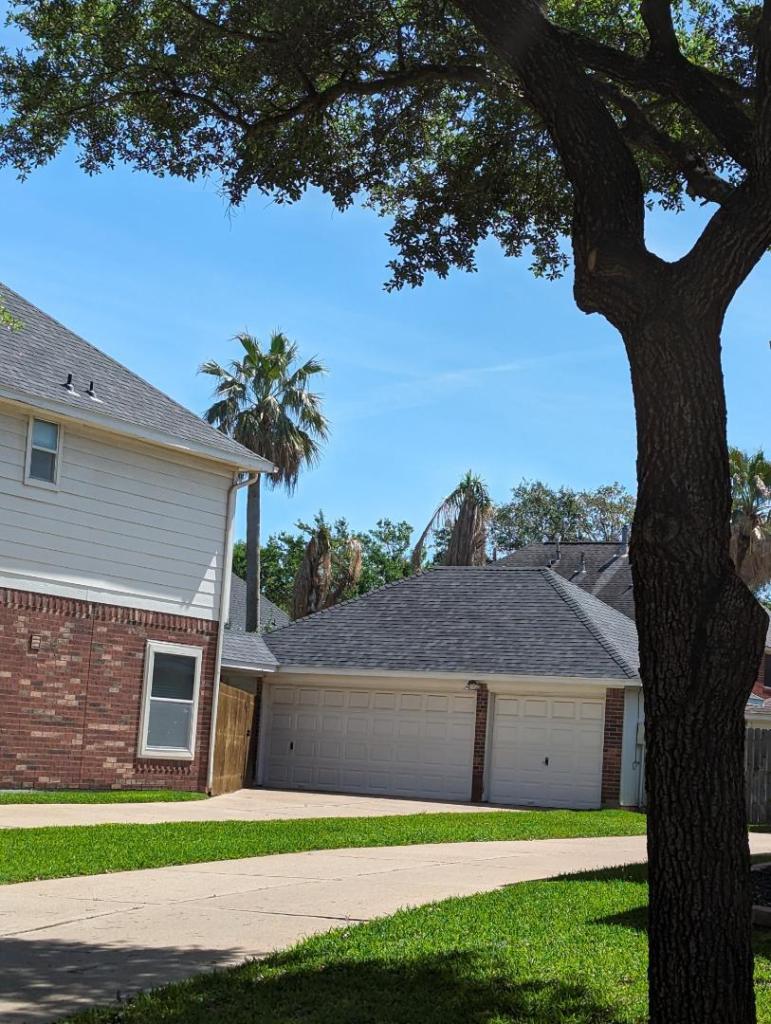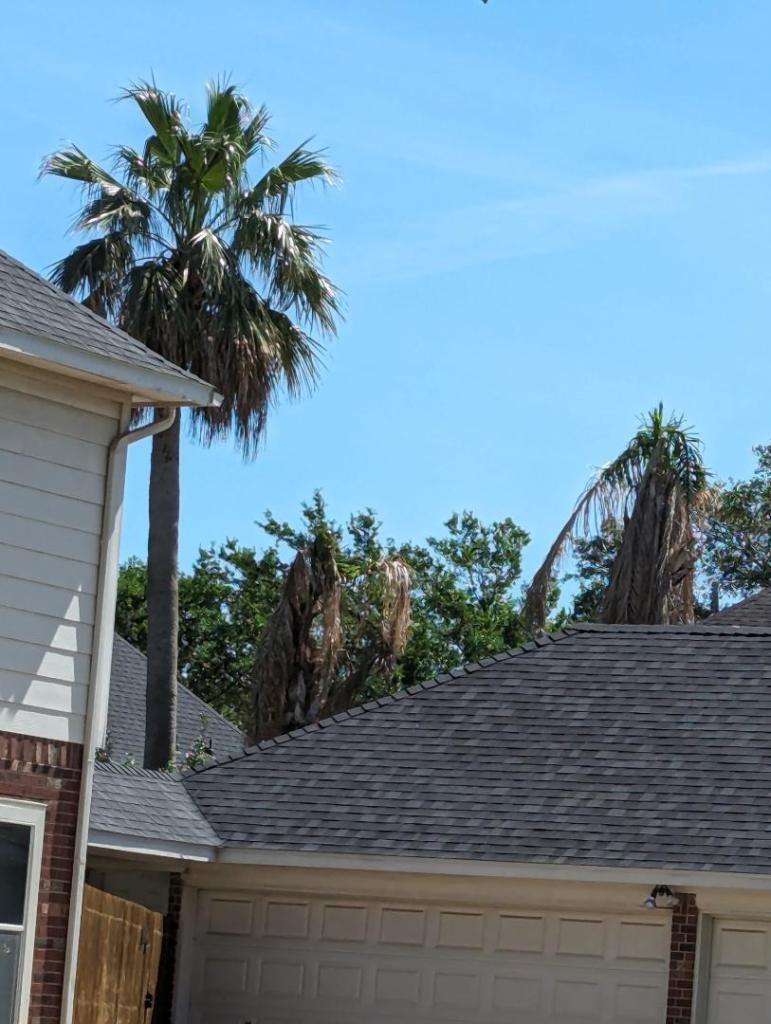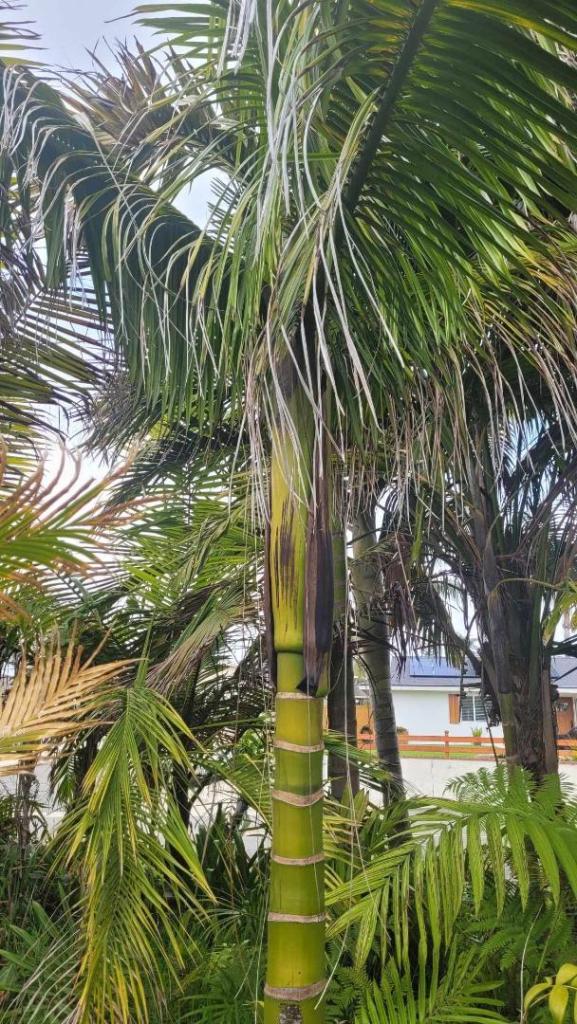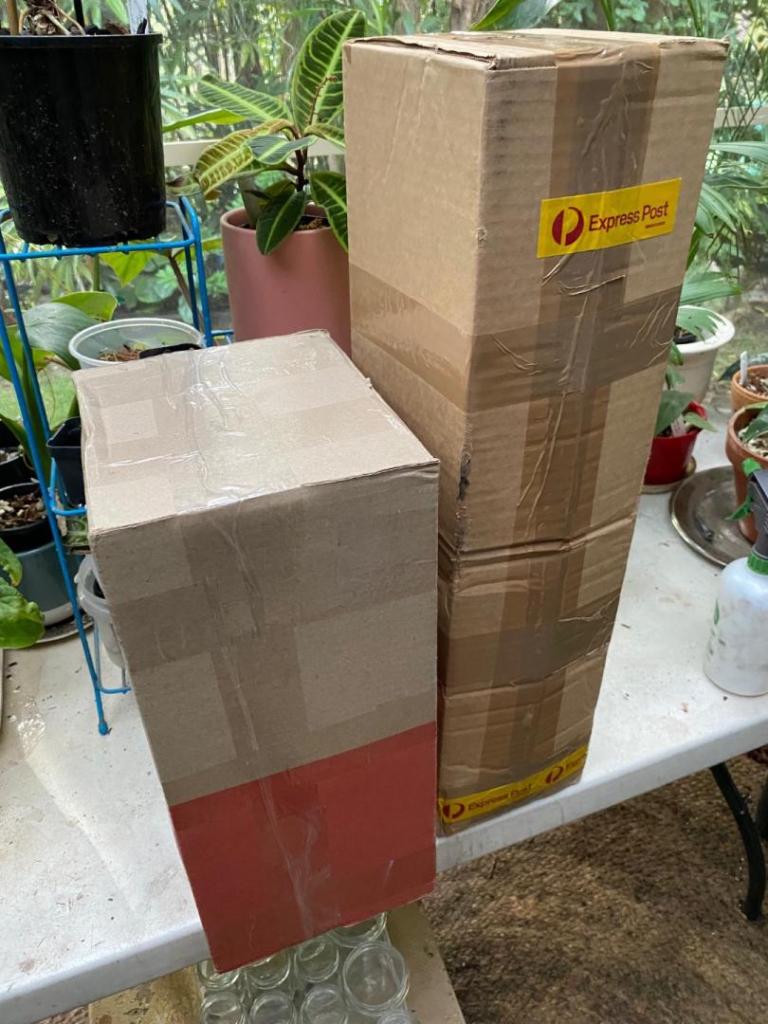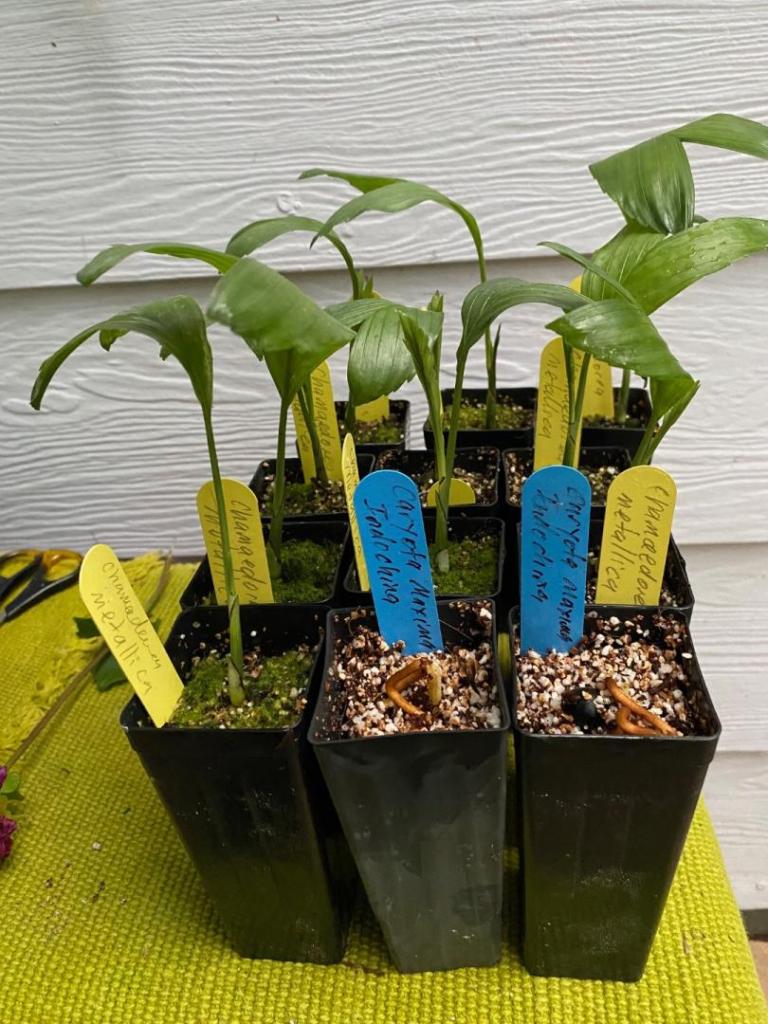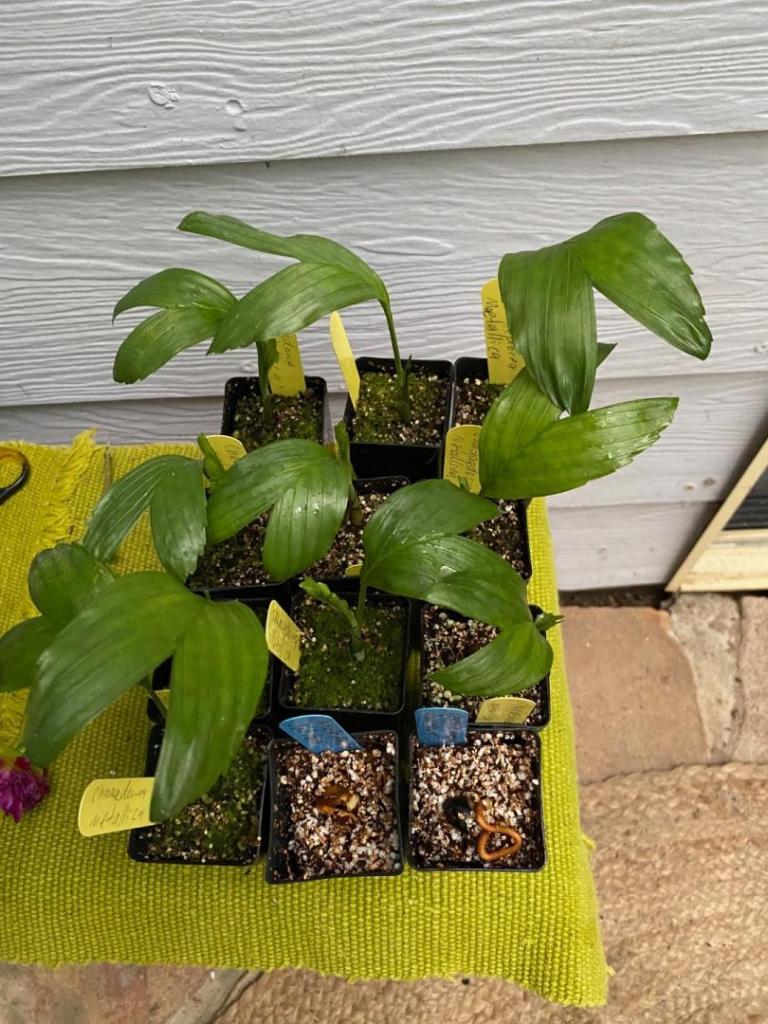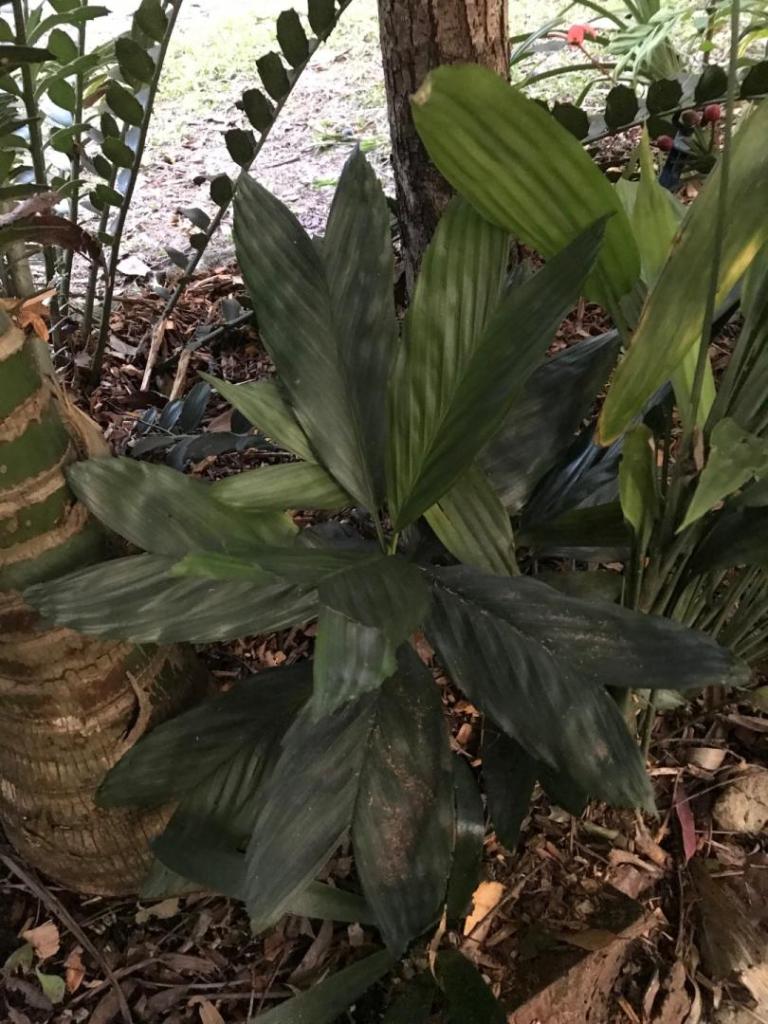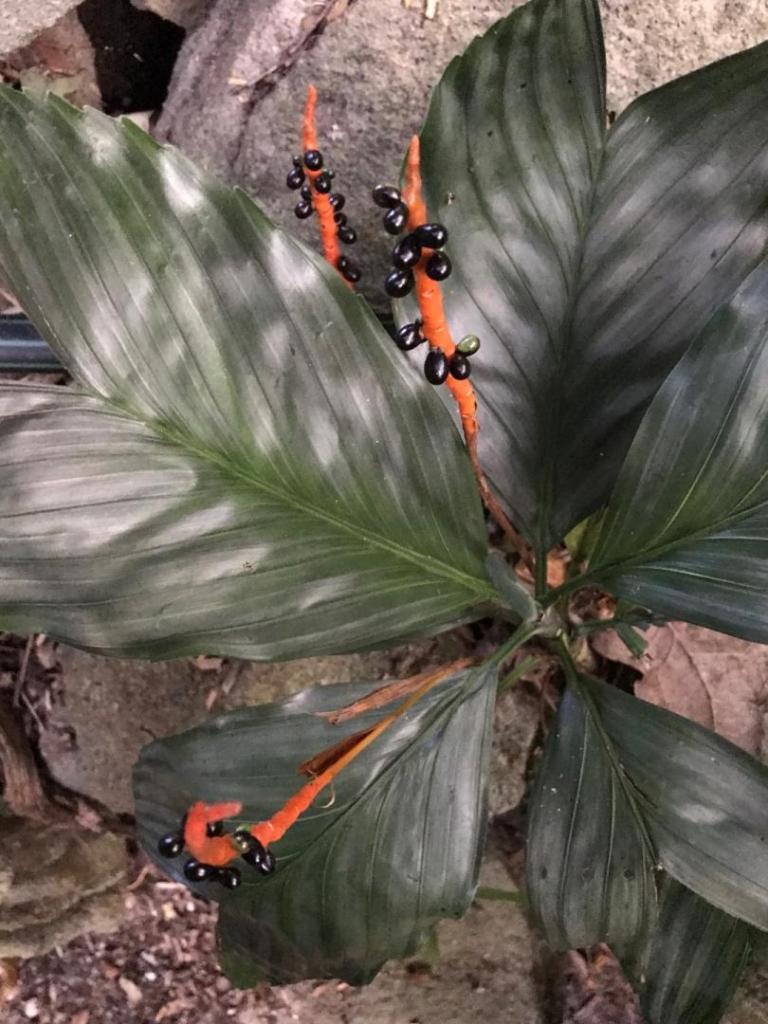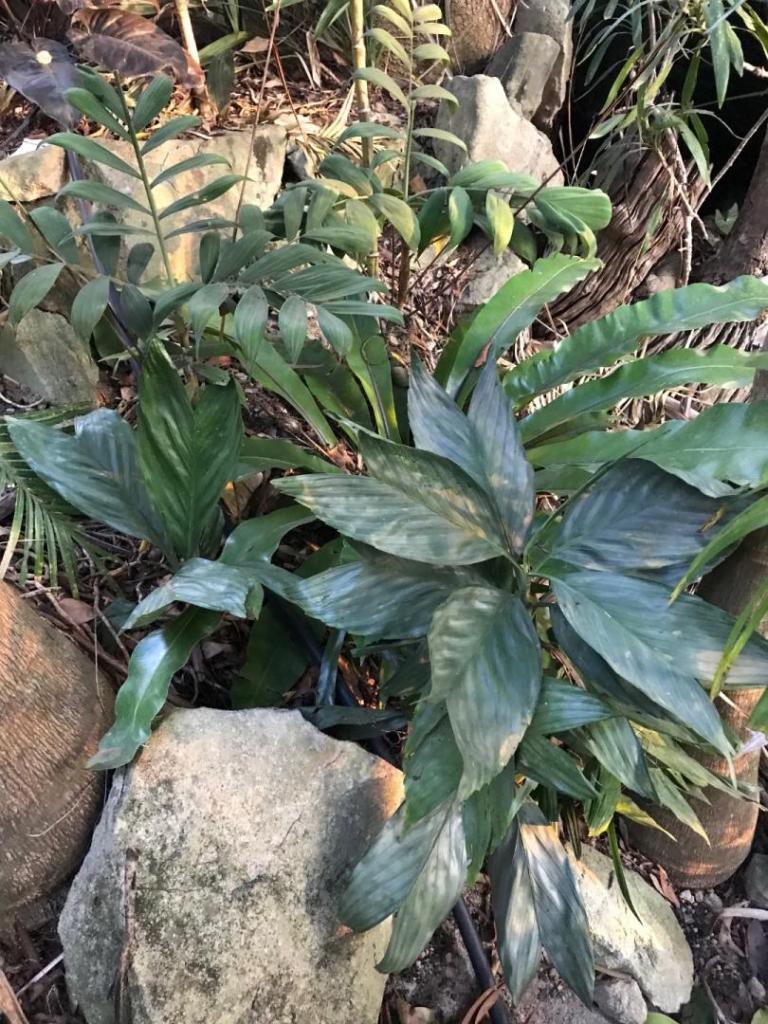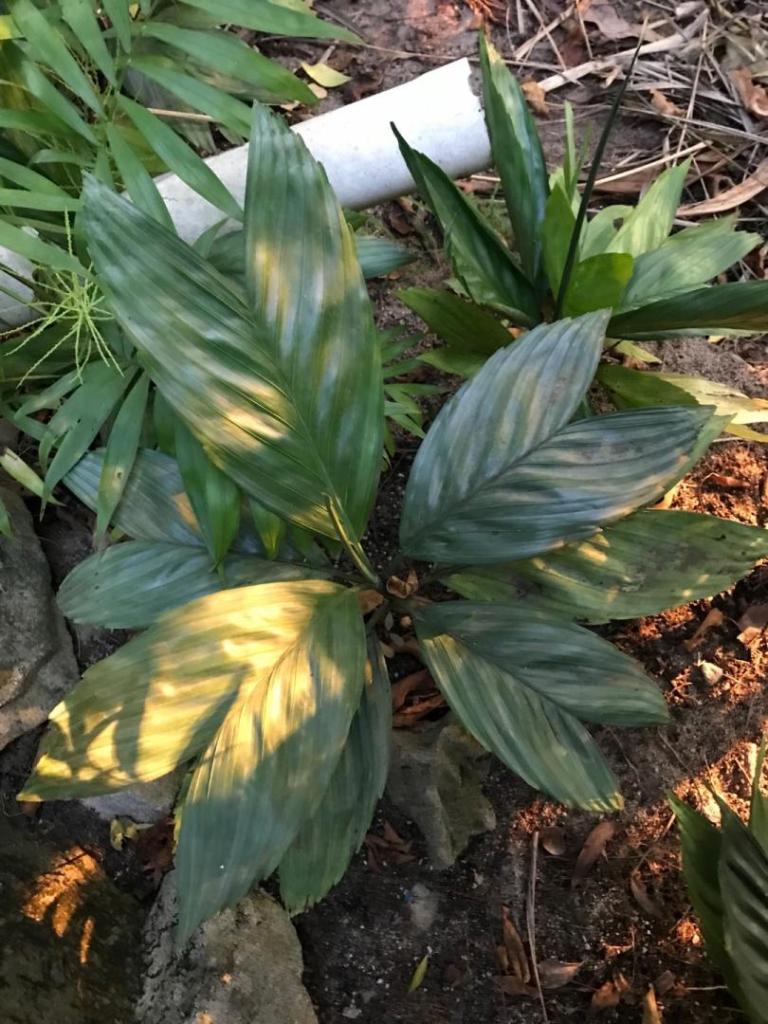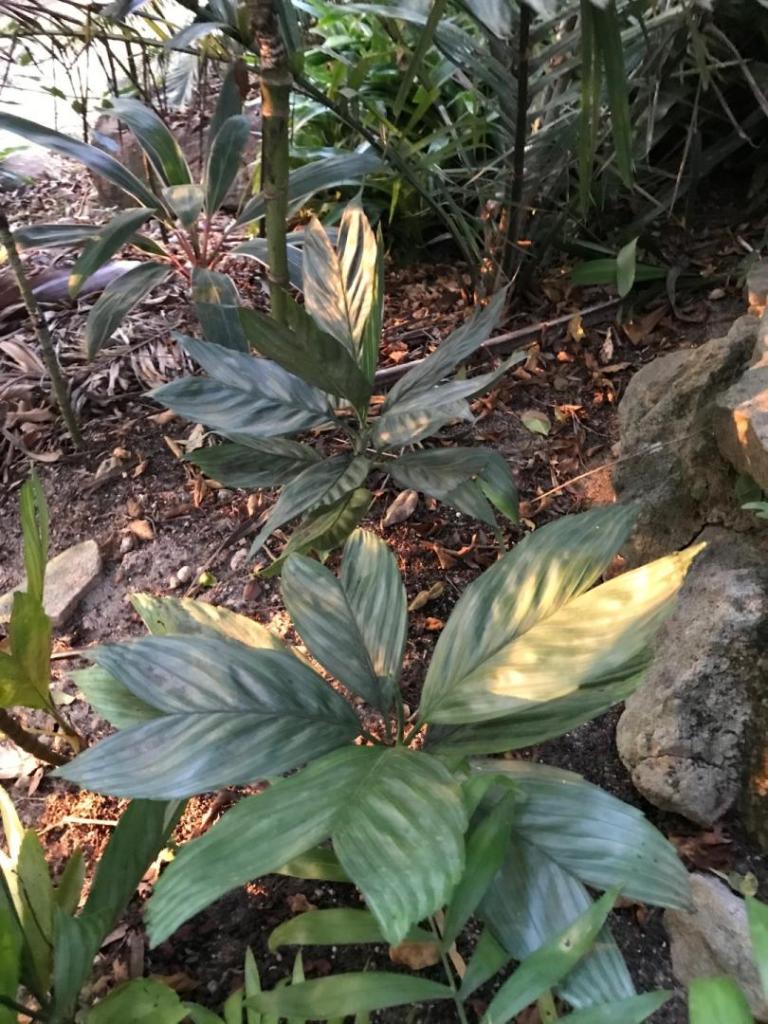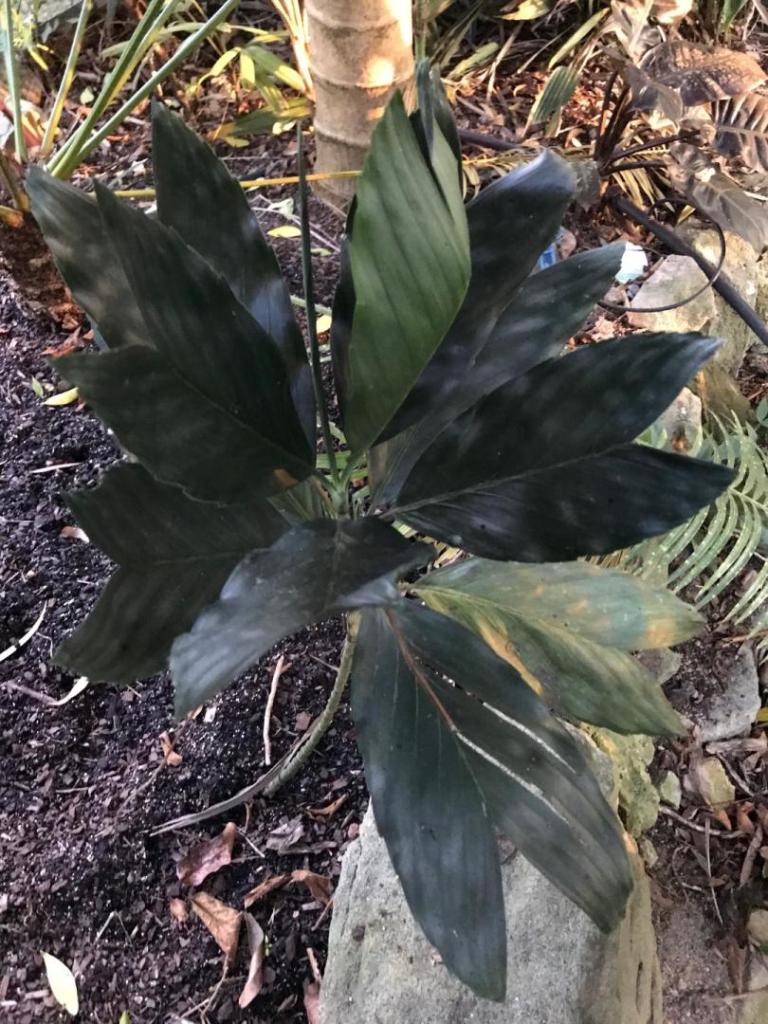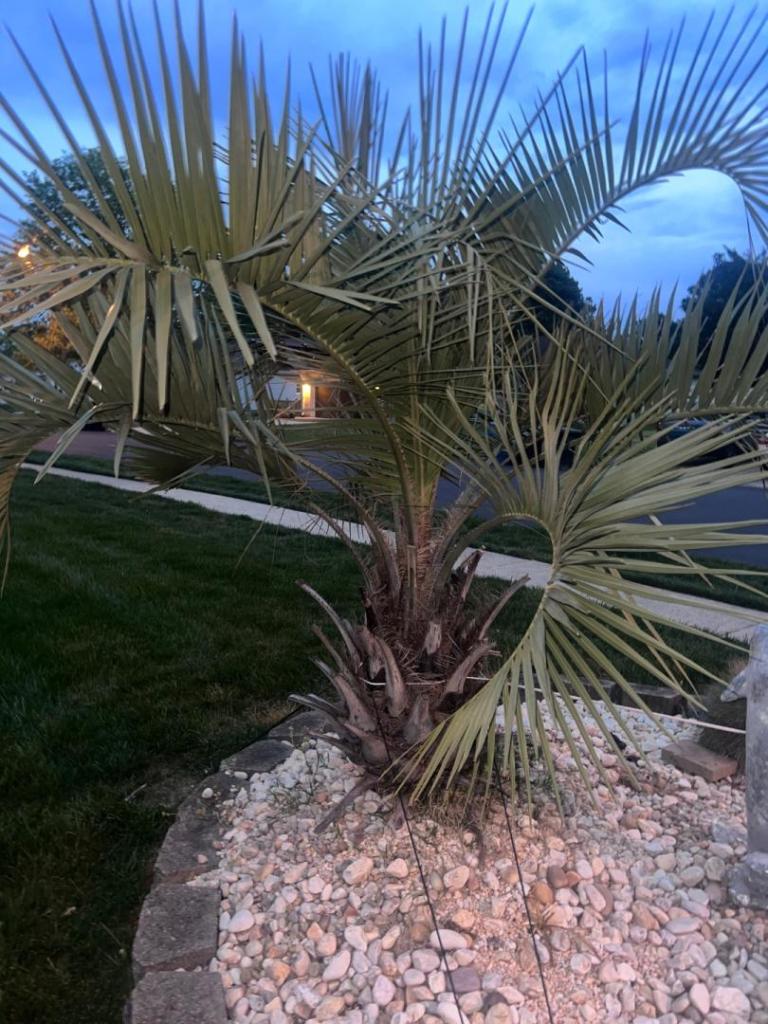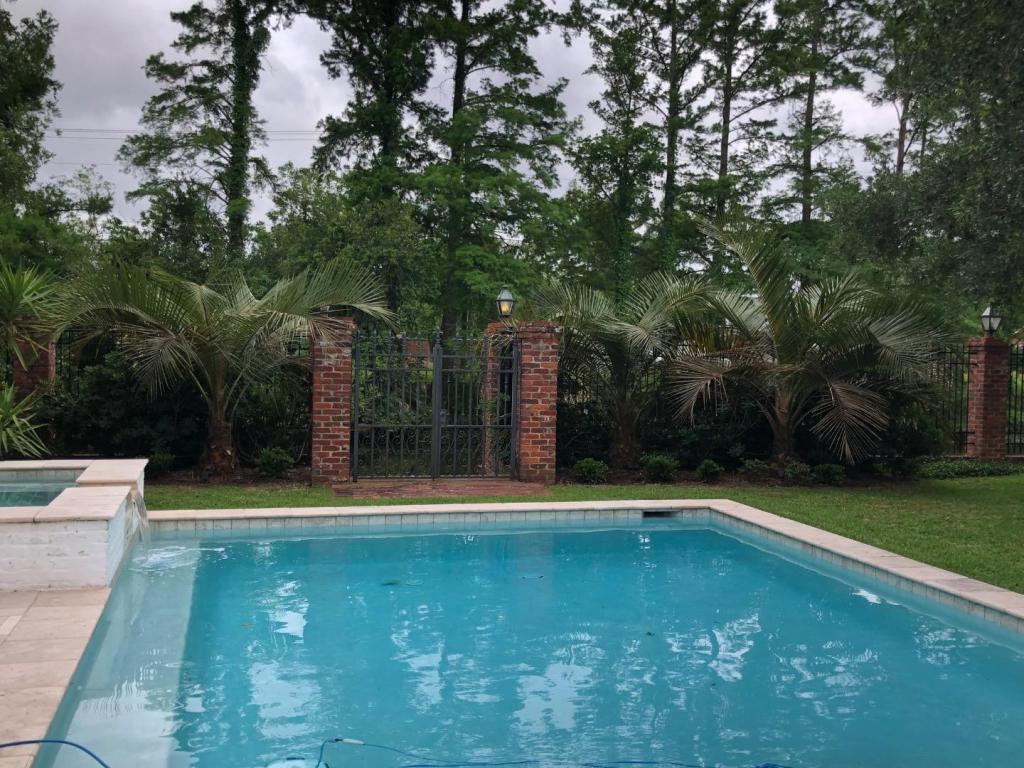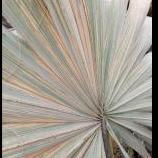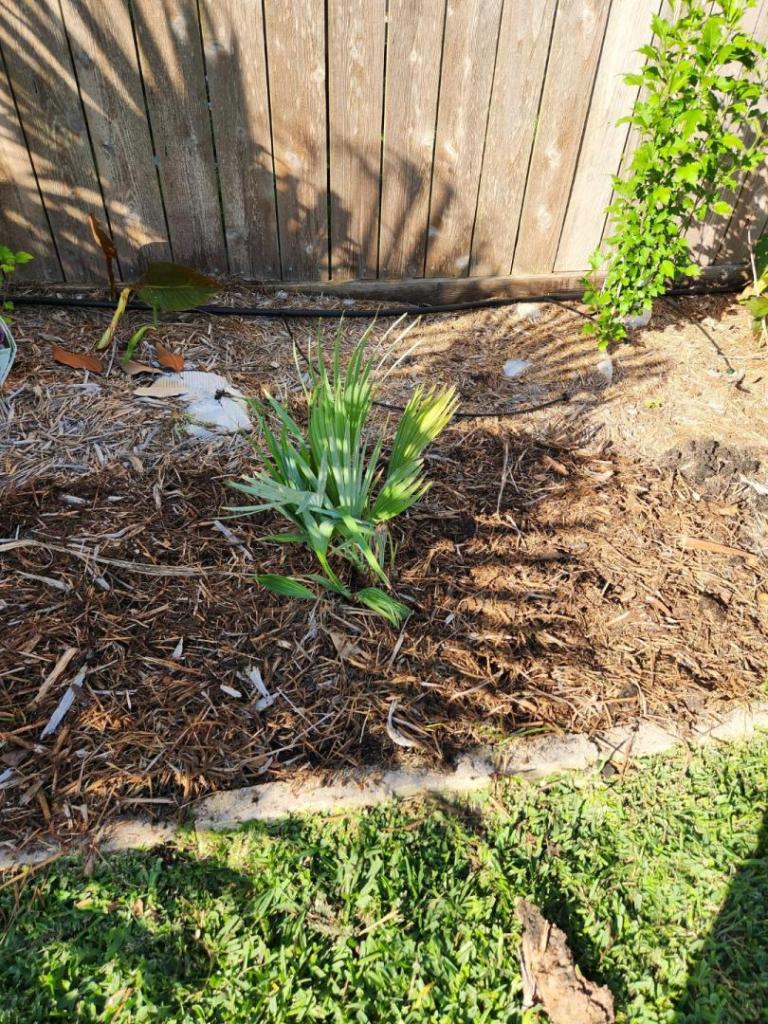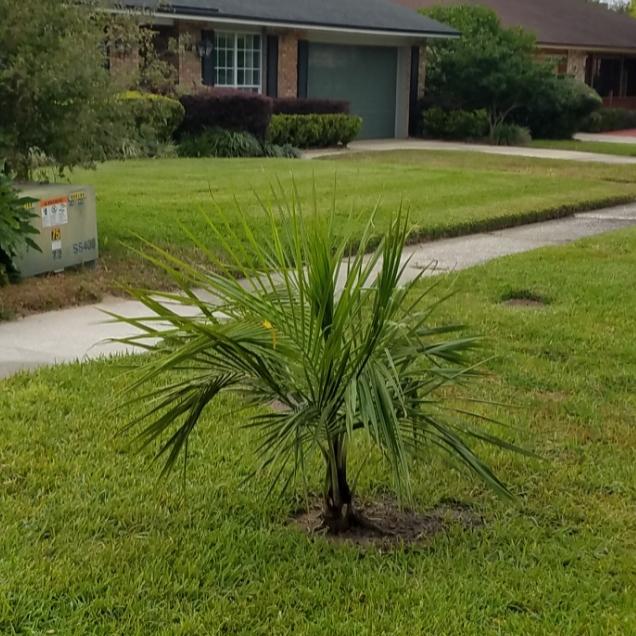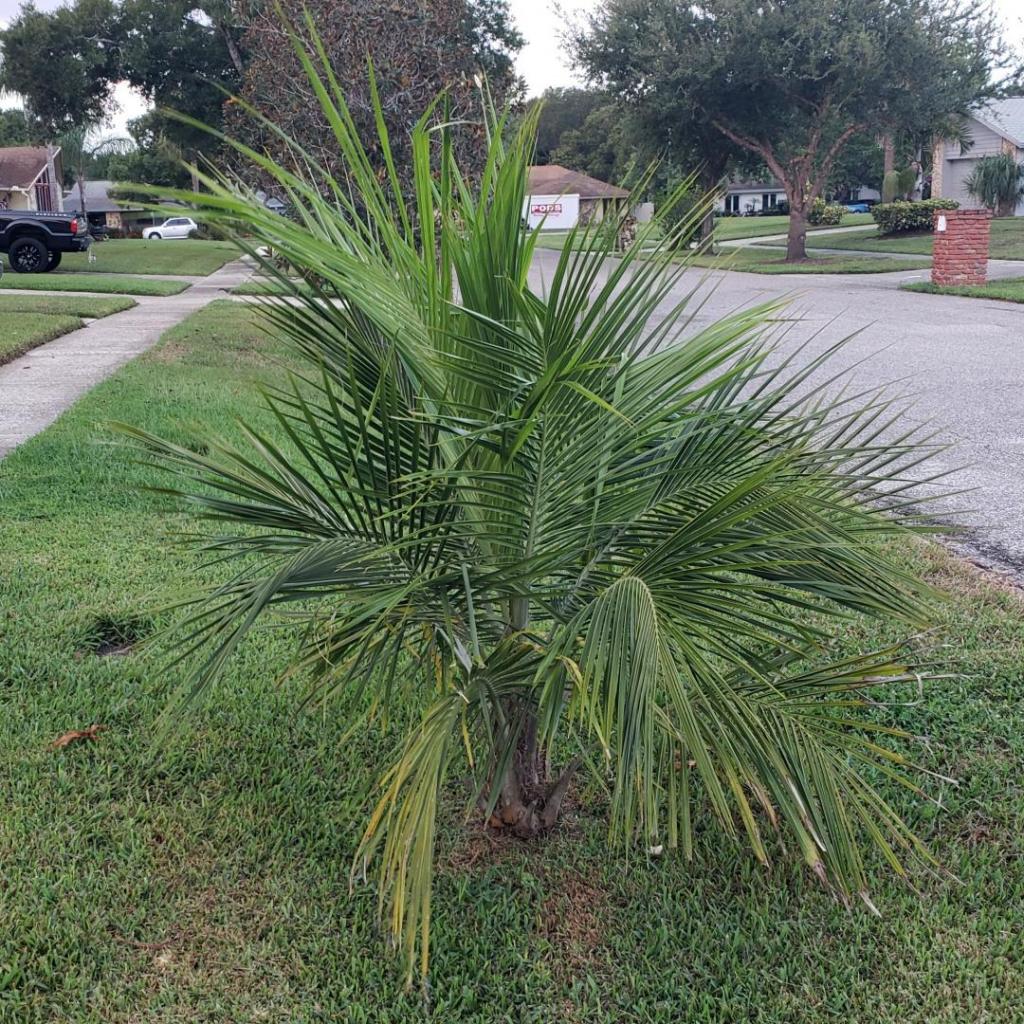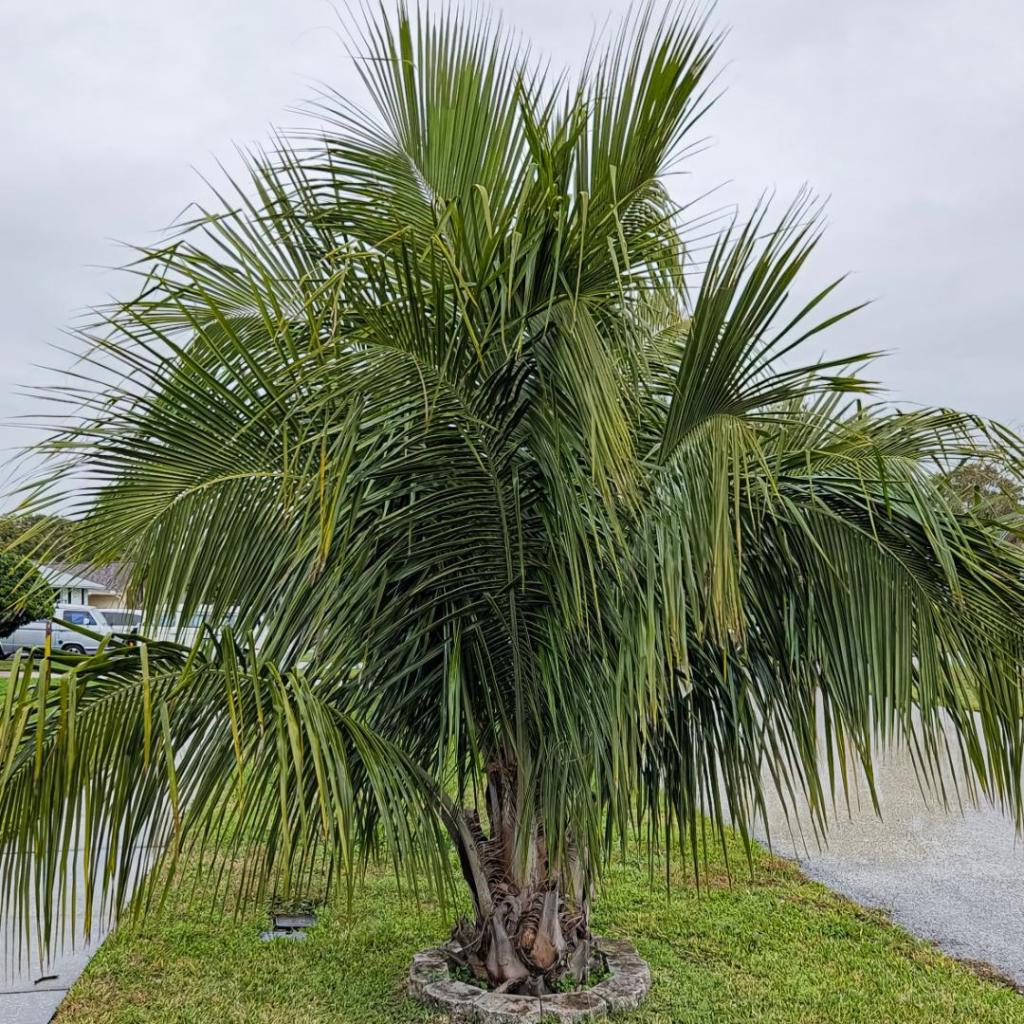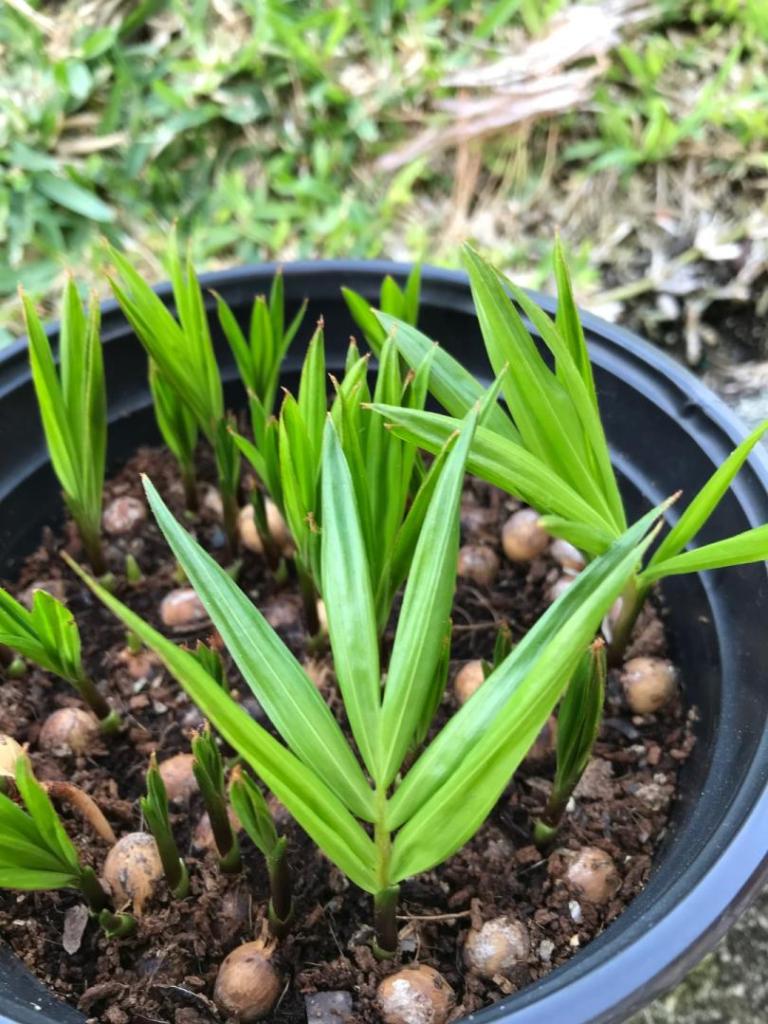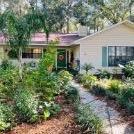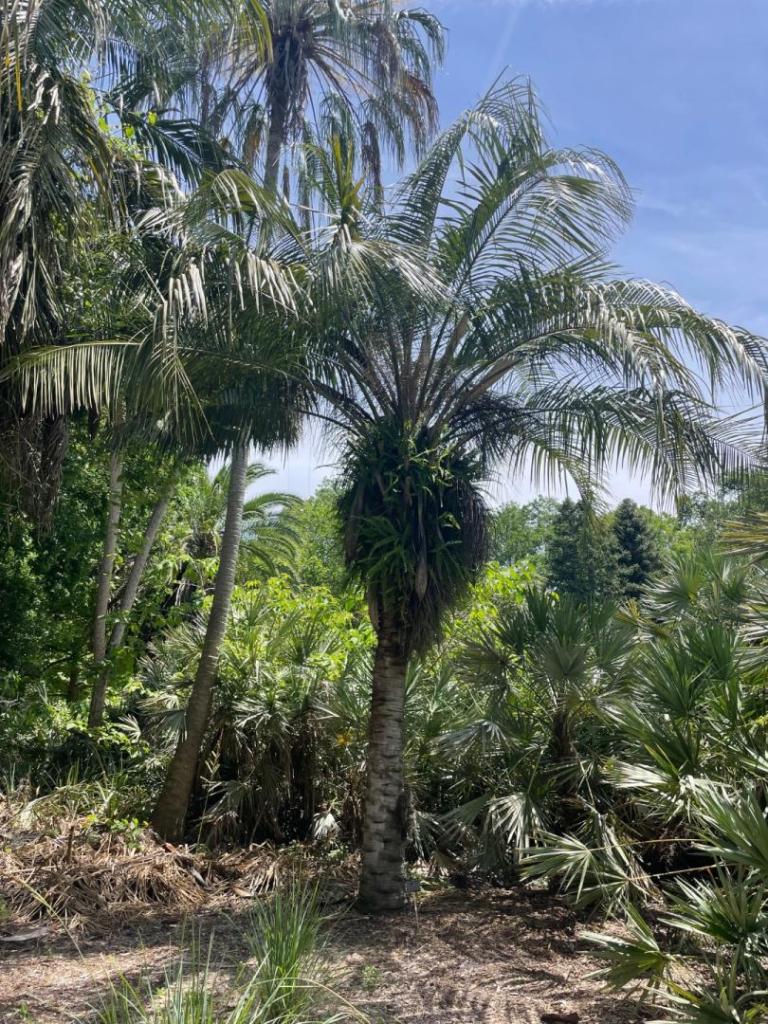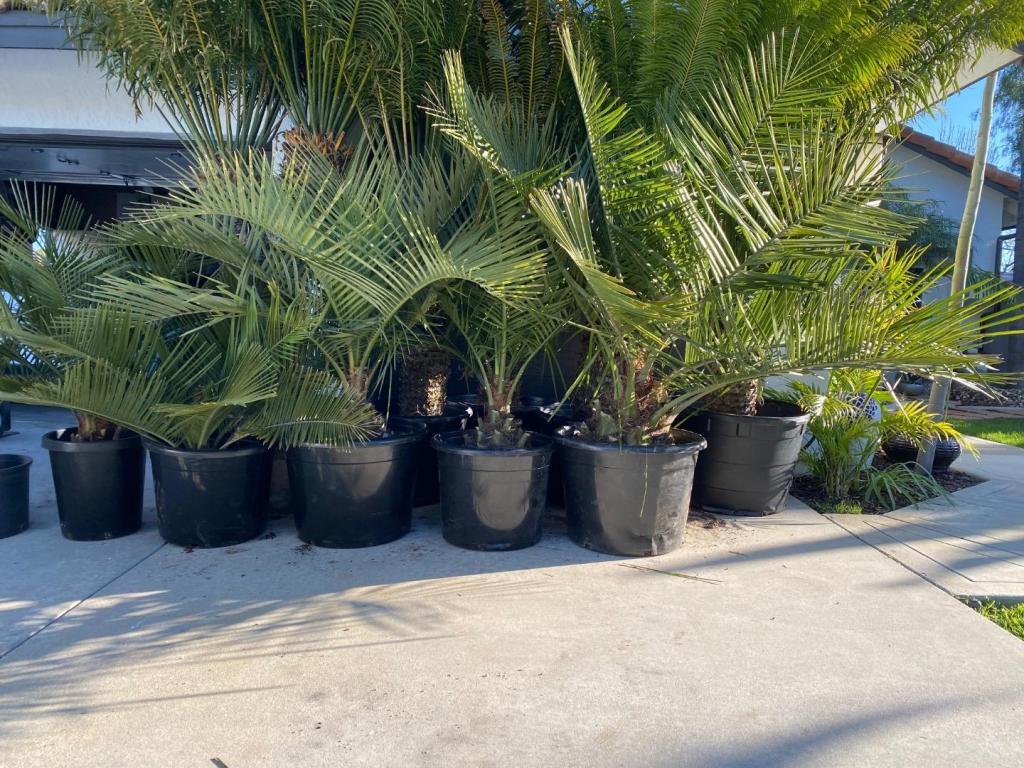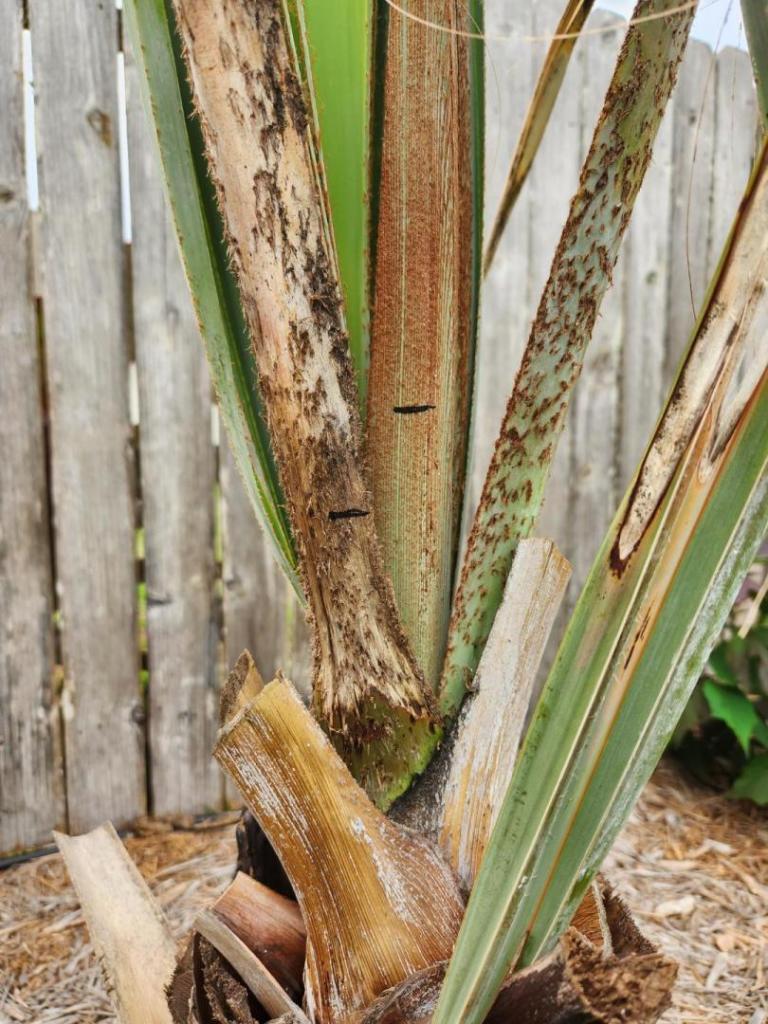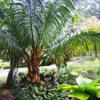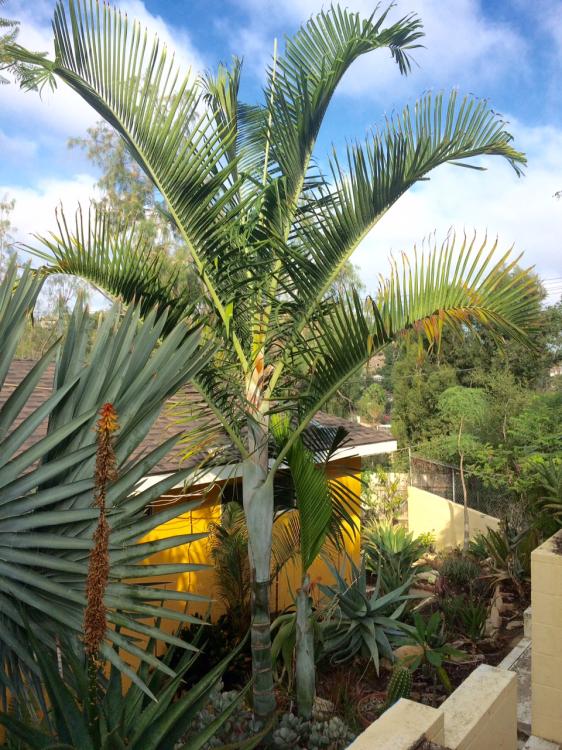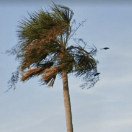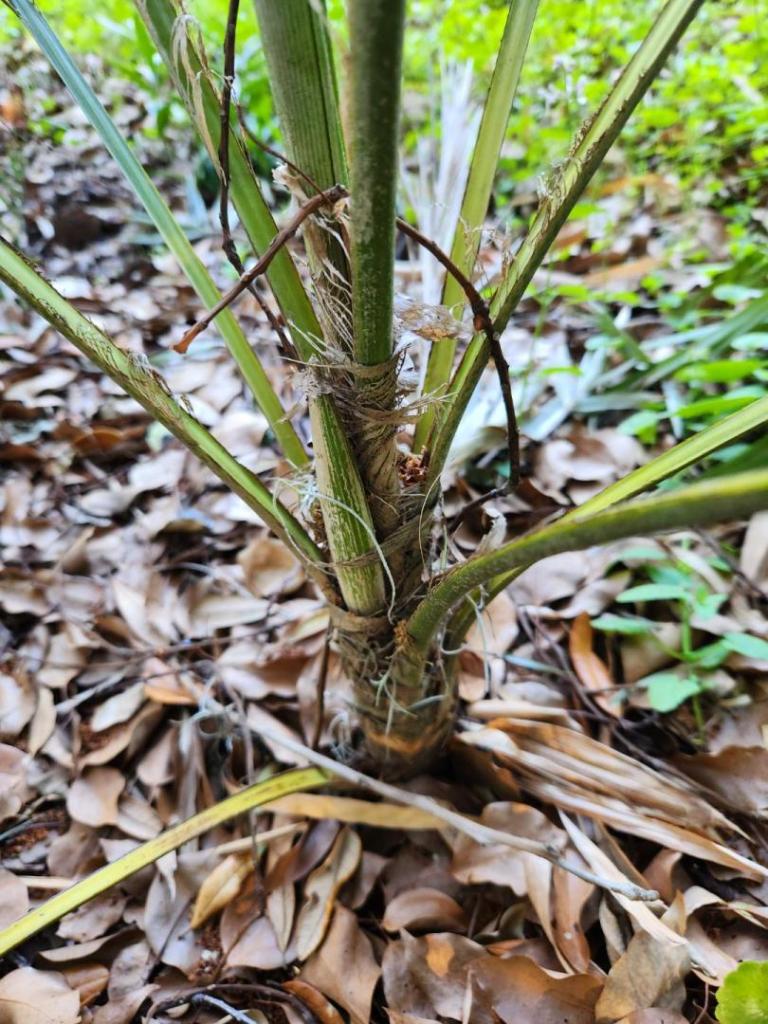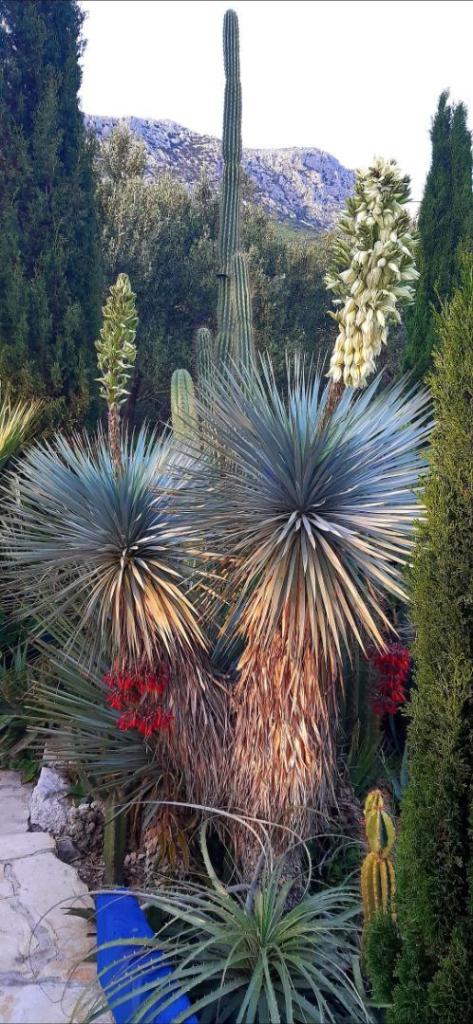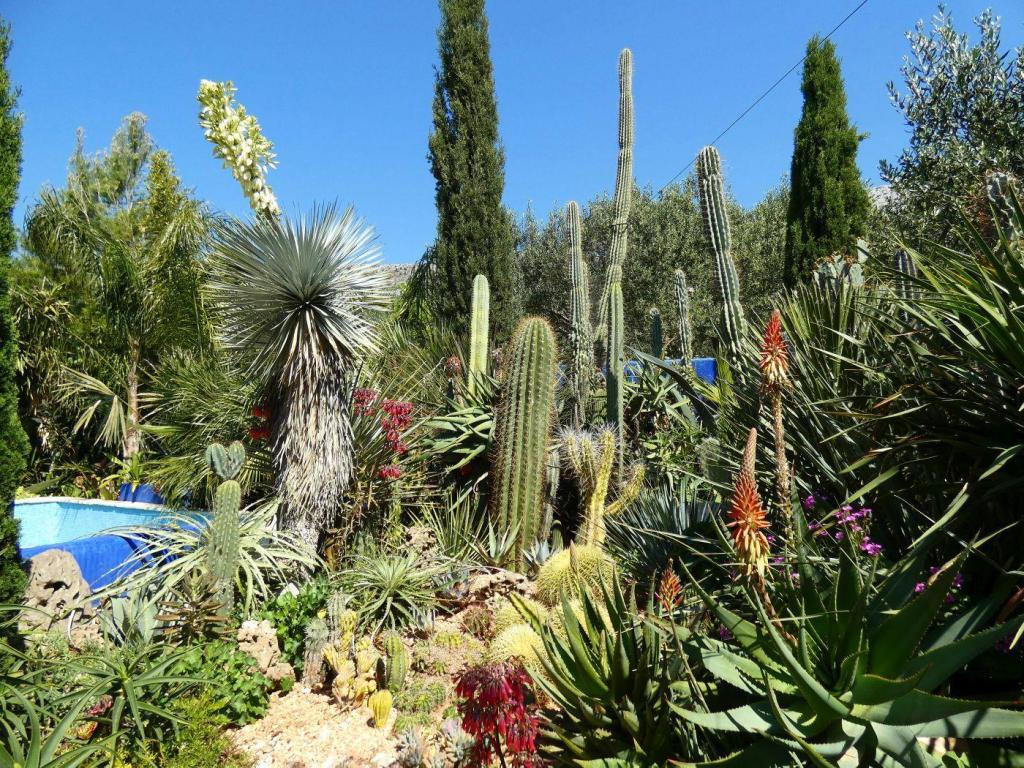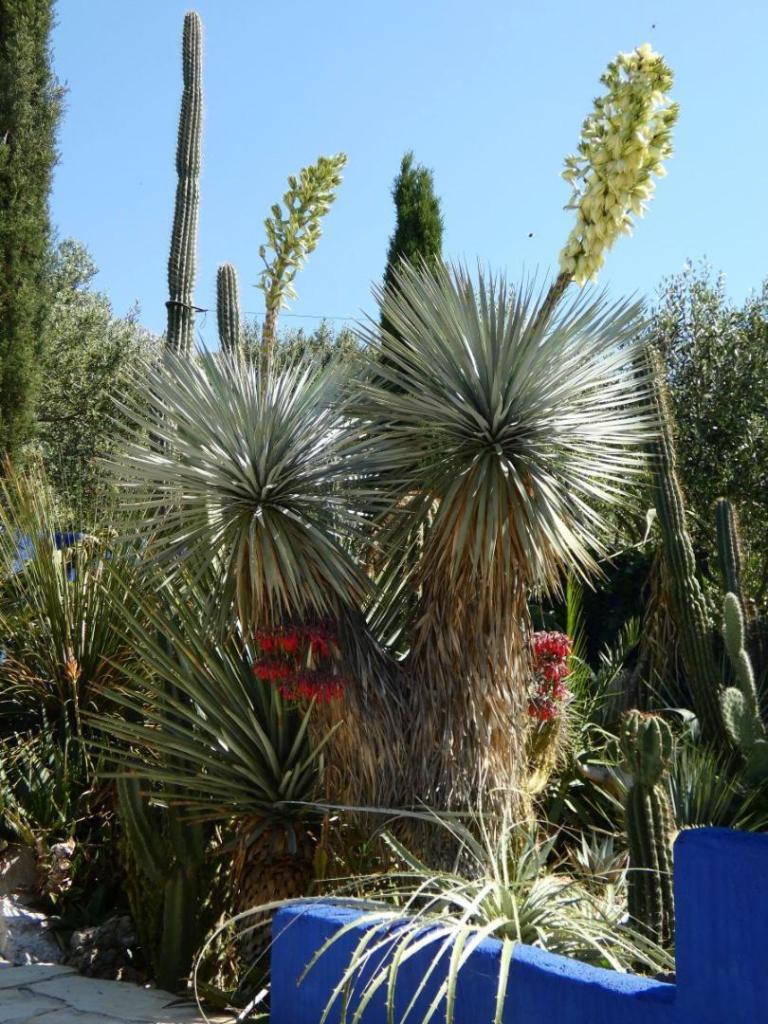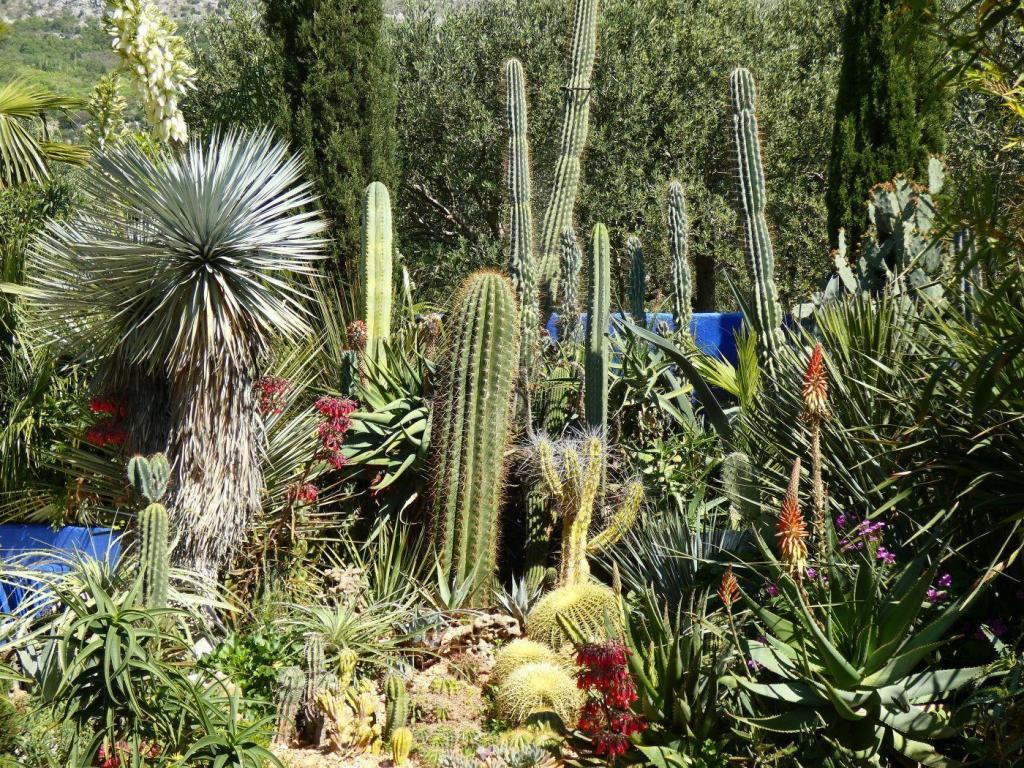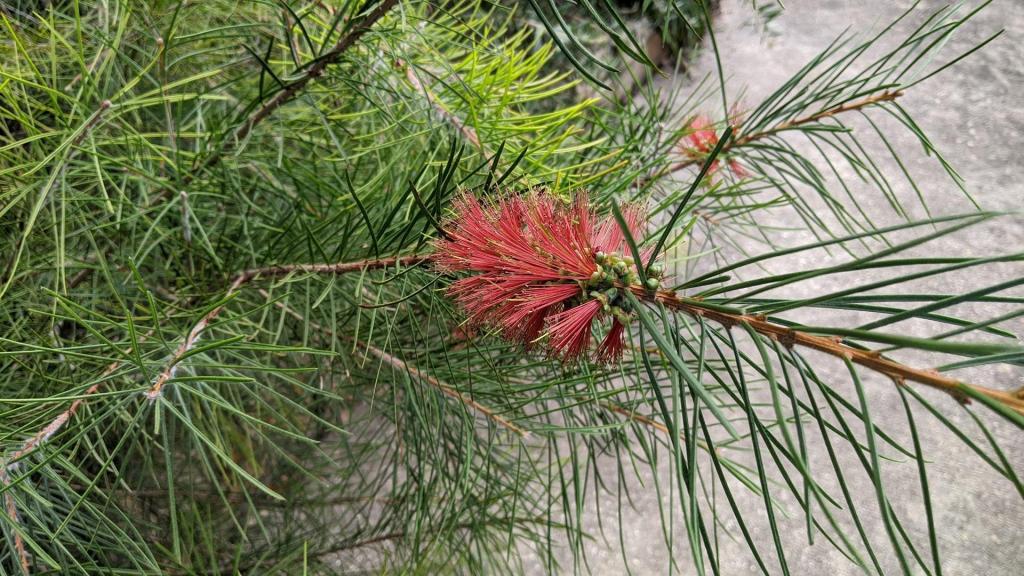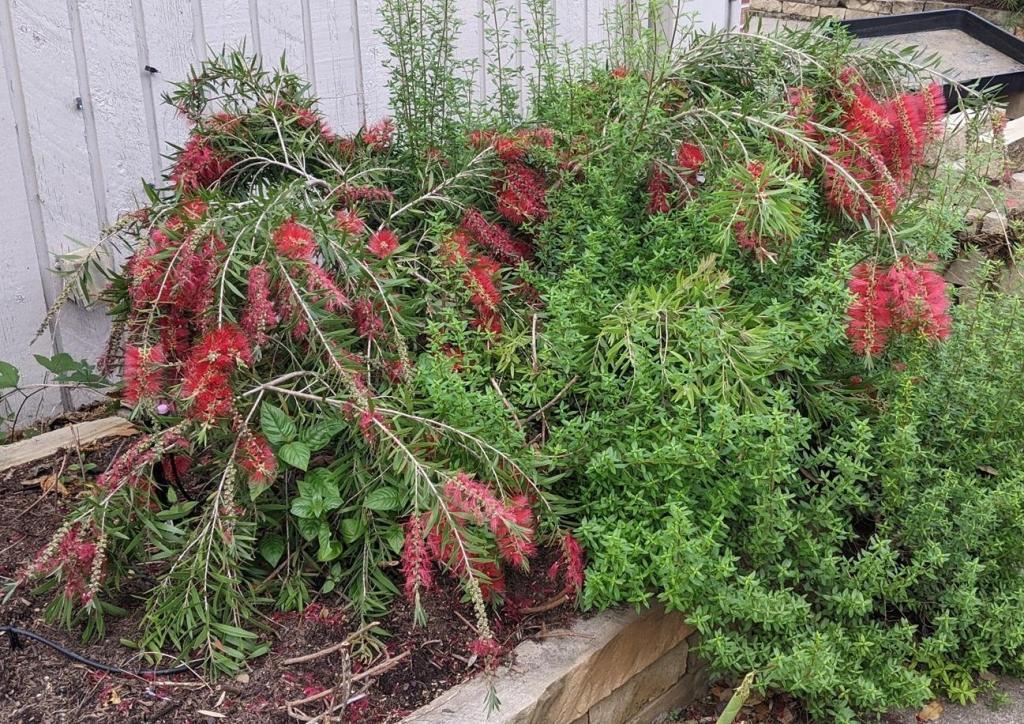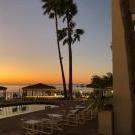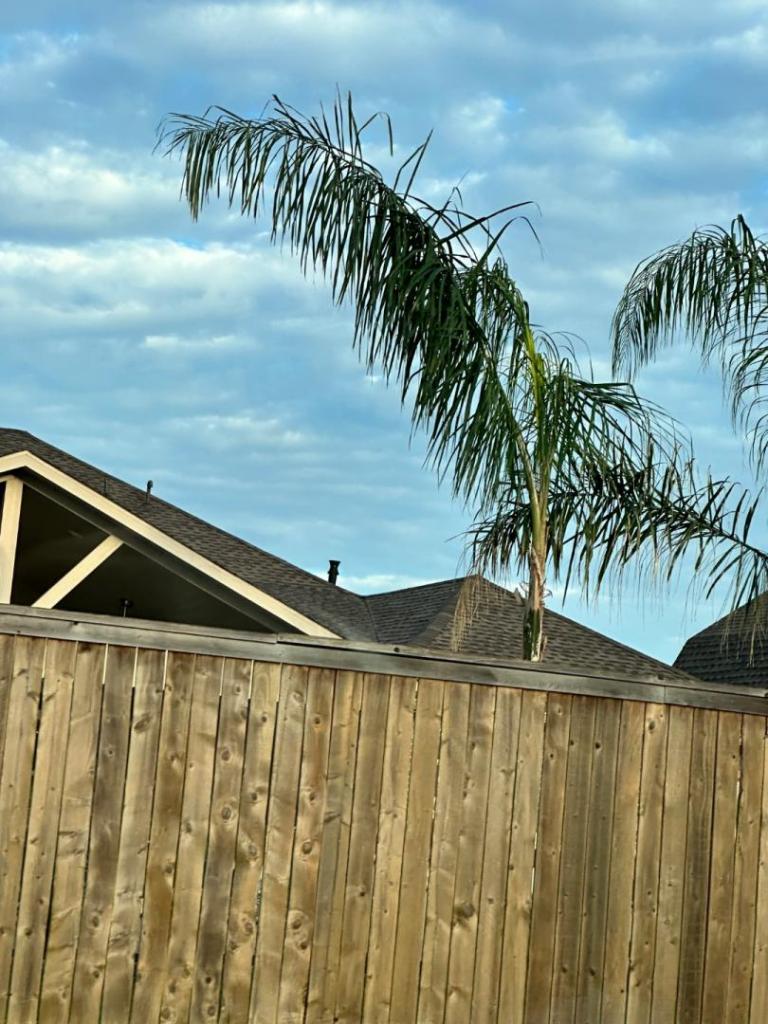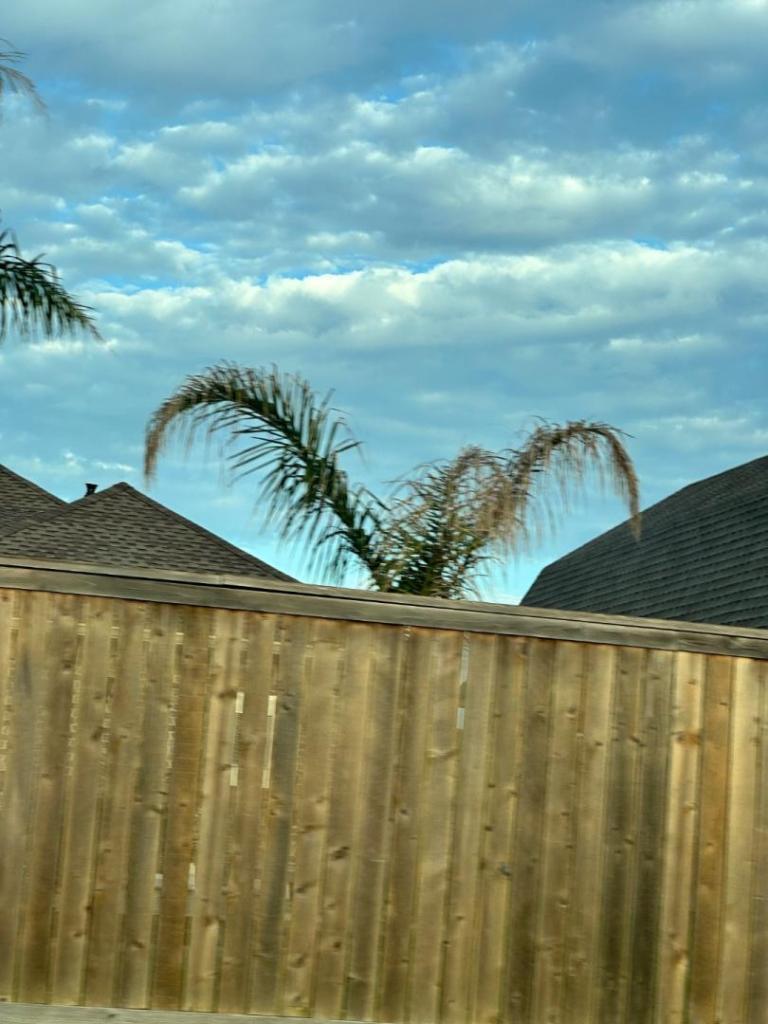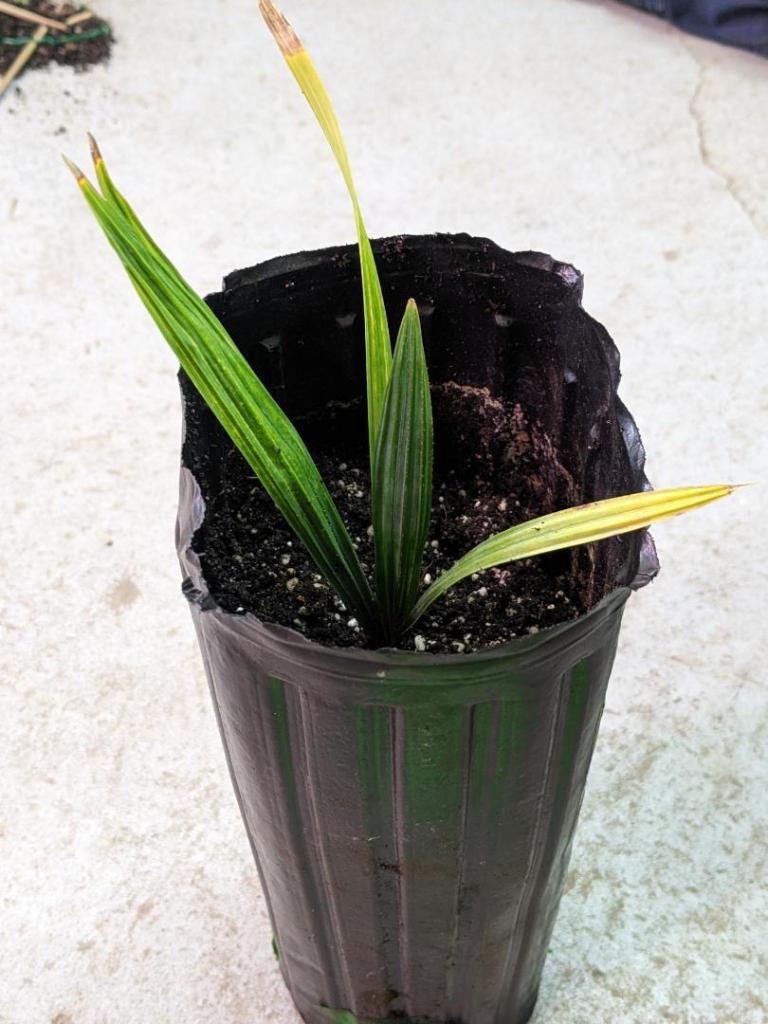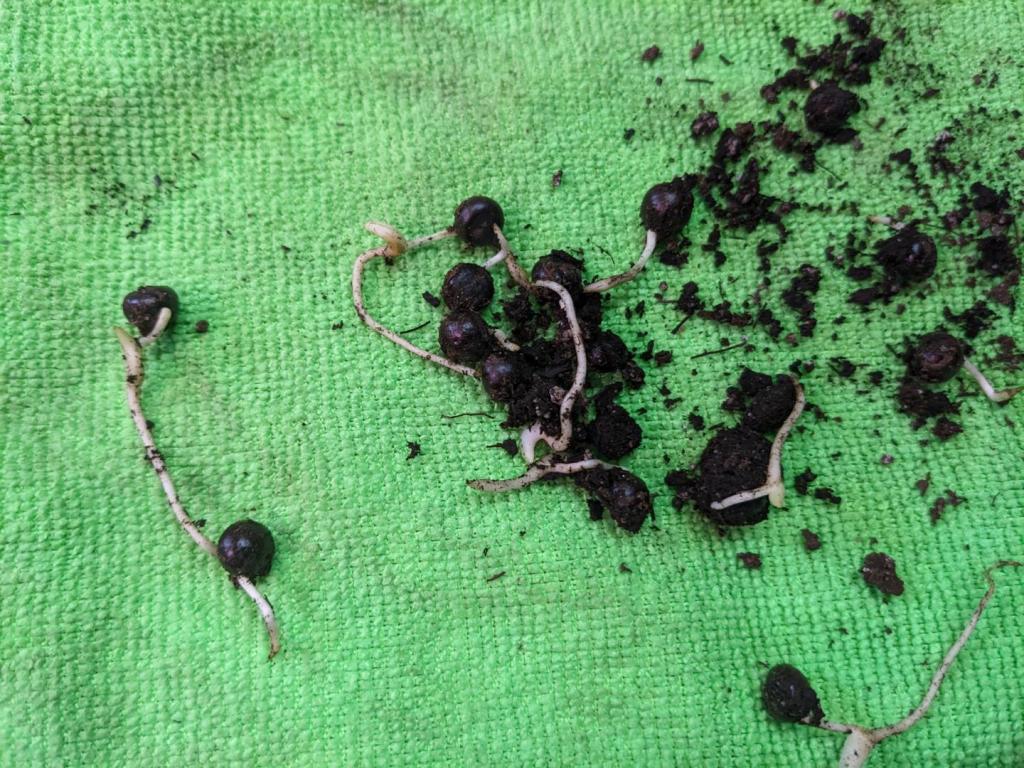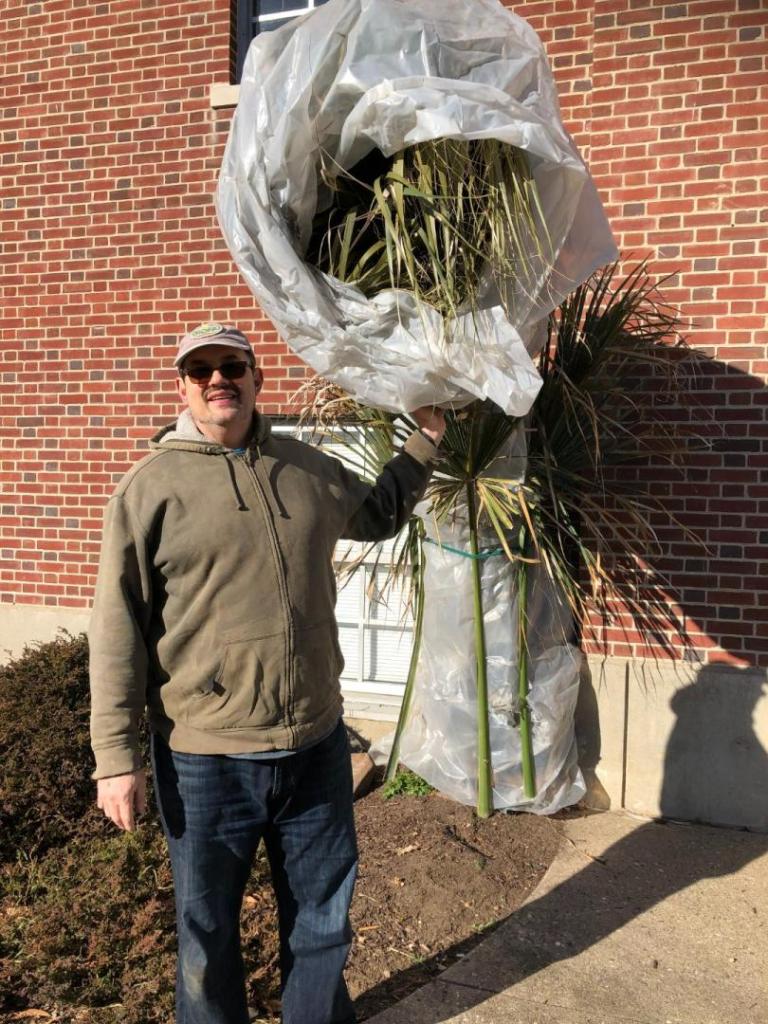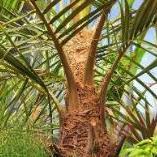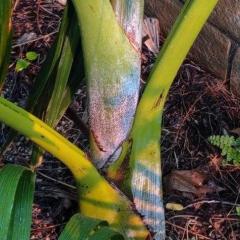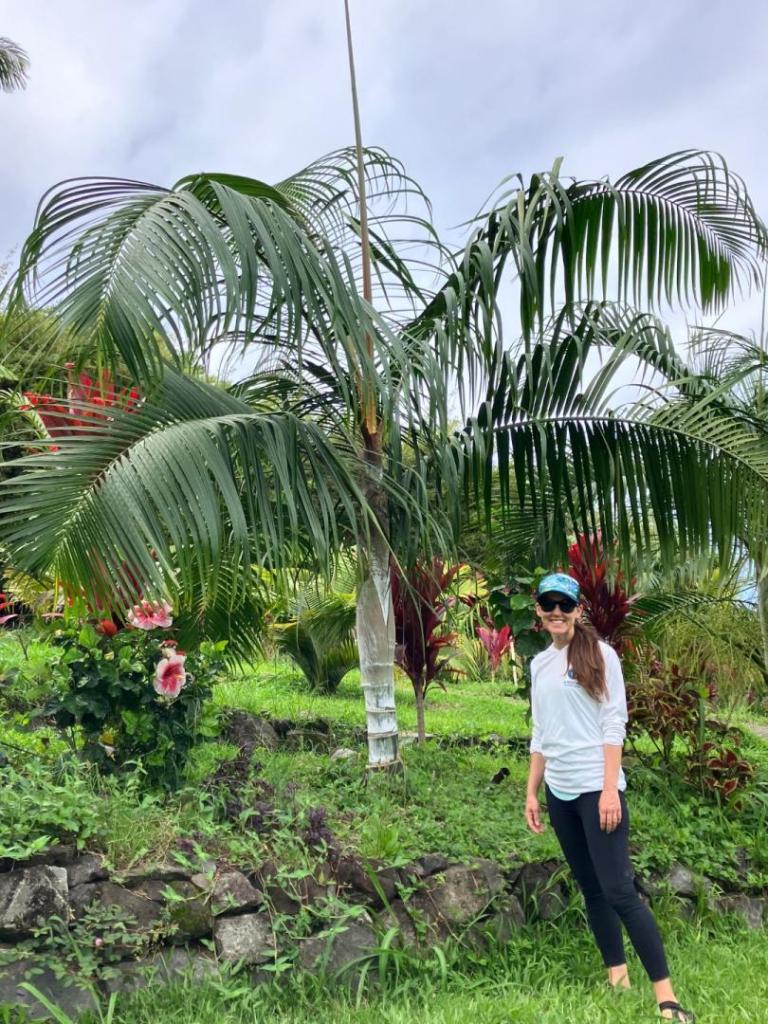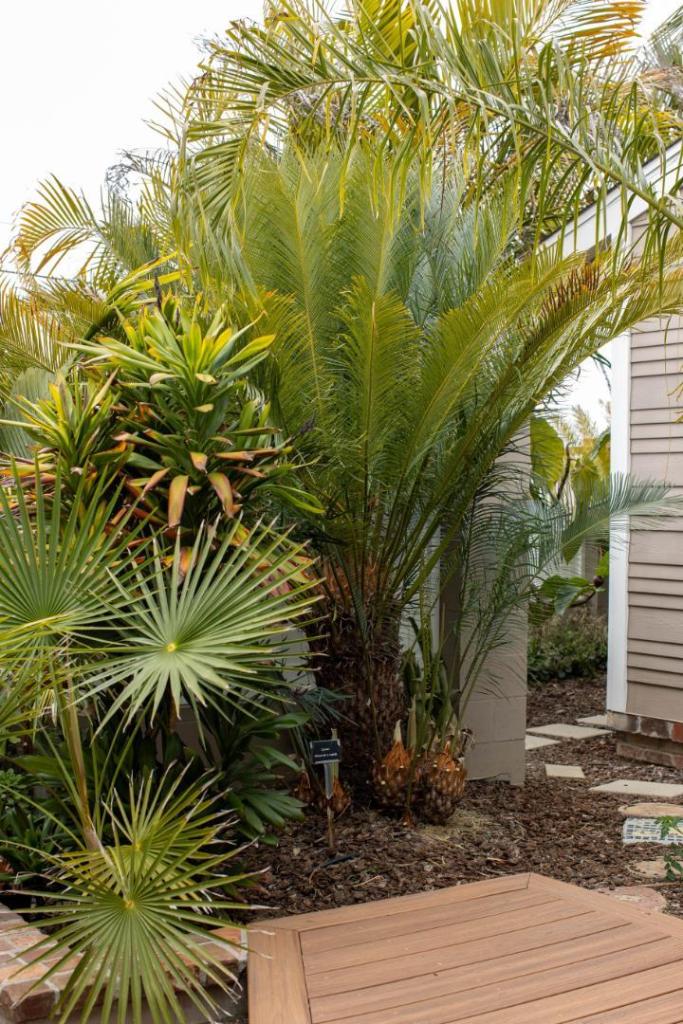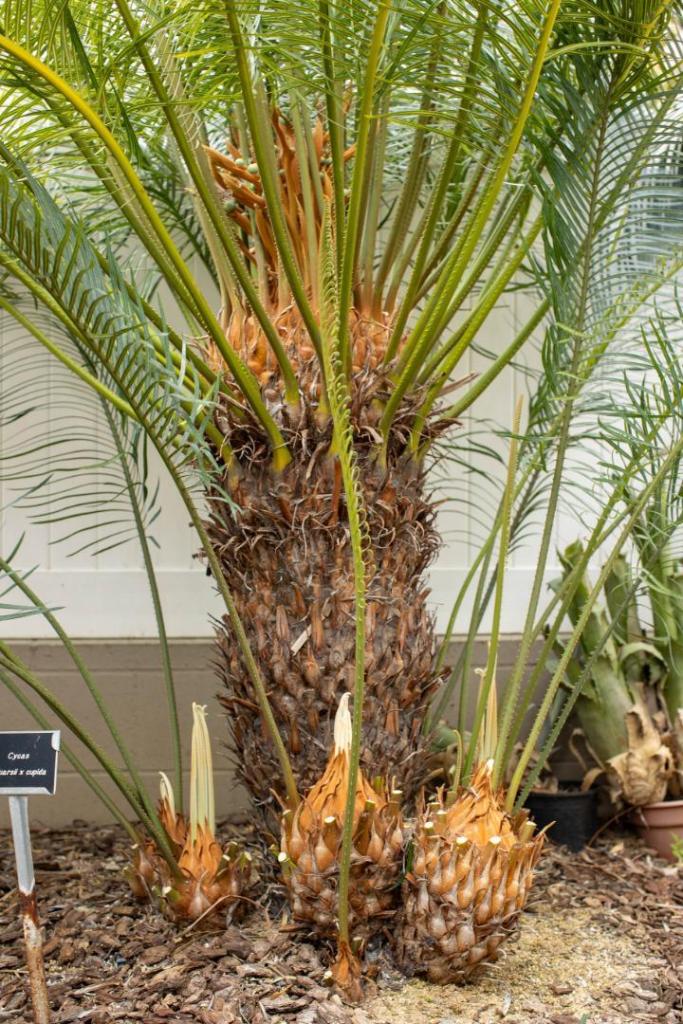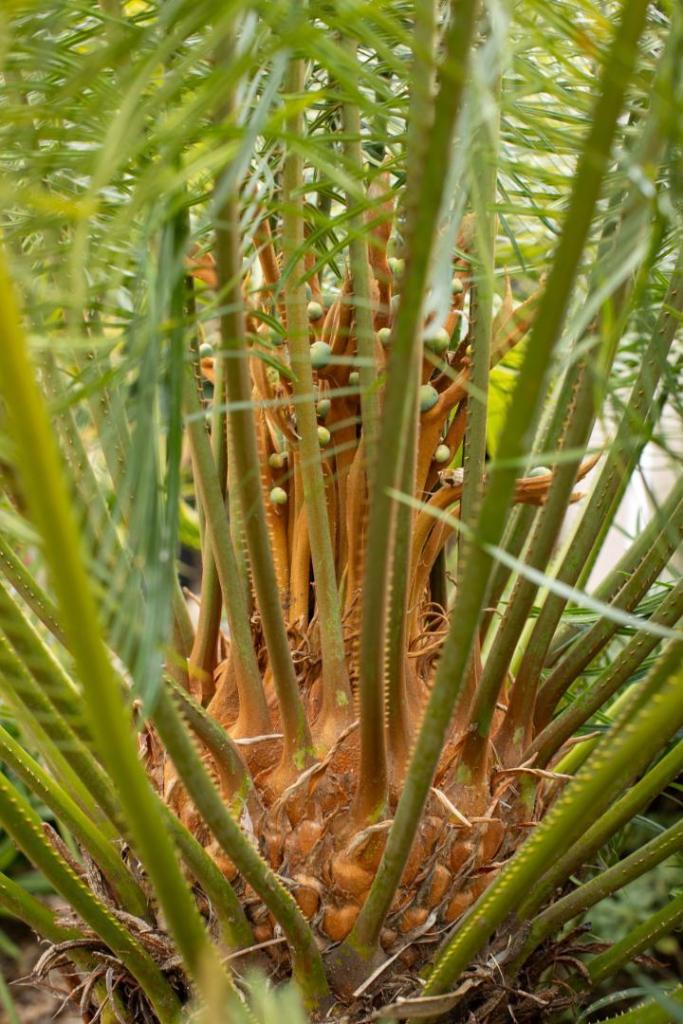Leaderboard
Popular Content
Showing content with the highest reputation since 04/13/2024 in Posts
-
This is the main drag down the palm jungle. Good thing I love being outside and working in the yard, it's a huge amount of work. There is so much more to see then just the main path, so many beautiful palms from every corner of the planet. iphone11 and people know how to improve the quality on video, choppy and blurred from time to time. Hope you all enjoy17 points
-
New member, but have been getting some good info from everyone on this site for a while. Started getting some palms a few years back and got inspired to start a bigger garden. In DeBary FL, about 30 miles north of Orlando. Progress so far: 2 B. Alfredii, one on the left planted from a 15g in June 2022, other went in this week from a 25g. Archontophoenix Cunninghamiana planted from a 7g in November 2021. Side yard has a couple of flamethrowers, Chambeyronia Oliviformis, another king palm, Lanonia Dasyantha, Caryota Obtusa, Chamaedorea Radicalis x Cataractarum (most likely) and Chamaedorea Microspadix. Plenty of other tropicals mixed in, big fan of Plumerias. Always run the risk of a hard freeze, but taking advantage of some high oak canopy and looking forward to a dense jungle look in a few years time.15 points
-
14 points
-
13 points
-
Fellow palm folks, about 7-8 months ago I broke my hip and had to have it repaired. Anyone who has been through this knows it is life changing. I will be 70 this year but I’m in very good shape and the doc says my bones are “super strong” for my age. I have been back on my bikes for a few months (avid cyclist) but haven’t ventured down the hill to visit my palms that are down there. I was afraid of losing balance and falling , it is steep. We have had above average rainfall so the weeds have really gotten bad. My wife and I have taken advantage of a cloudy day to clear out around our palms. My , how they have grown! I thought I would share some pictures of them. Harry13 points
-
11 points
-
Here's a spring 2024 update, in the same photo order as the 11/3/2019 post. These are about 5.5 years from ~5' tall big 3 gallon plantings. The front yard one is still the smallest, but is around 15 feet tall: The East side of the house has the biggest, and at about 20' tall is very close to trunking. The backyard SE pair is towering over everything nearby, here is one of them crowding a 5' tall Chamaerops Humilis: And the SW center of the bed is my favorite placement out of the big ones:11 points
-
I’m reporting back a 100% germination rate on the dozen “Pinanga mooreana” seeds purchased back in January. They are expressing an interesting burgundy color now as seedlings. I’m looking forward to watching the color and leaflet shape develop as they mature. Thanks again for the making these seeds available.10 points
-
@Mr. Clark Welcome to PalmTalk! Because of where you are located, you can grow practically anything. That said, if you want to get the nursery "into the black" as quickly as possible, you'll want to get yourself a guaranteed revenue stream with stuff that can grow fast and wholesale just as fast to commercial and government customers. Residents also buy most of the palms below and many of them are outside of the typical "Phoenix/Syagrus/Washingtonia/Sabal/Butia" that wholesalers have relied on in the past. Roystonea regia (Royal Palm) and Cocos nucifera (Coconut Palm) are an easy sell to consumers. Down your way they are common, but Royals are increasingly being used here to replace the more disease-prone Syagrus romanzoffiana (Queen Palm) and Phoenix species. The aforementioned Beccariophoenix alfredii is increasing in popularity rapidly from Jacksonville down along I-95 and the entire I-4 corridor. Mules are the even-hardier pinnate palm for cooler areas. Our municipality plants both everywhere. A good family of palms to sell includes Veitchia arecina (Montgomery Palm), Adonidia merrillii (Christmas Palm), Wodyetia bifurcata (Foxtail Palm), and Carpentaria acuminata. Where you are located and in most of South Florida, any of these can grow anywhere. In Central Florida, Christmas Palms and Foxtails sell quickly for residential landscaping and hotels. Veitchia are more of a novelty here, whereas down your way, they line streets and are planted near buildings. Carpentaria is more of a dark horse of the family, but is a good palm for areas that require a Veitchia look with a smaller crown. If you hybridize Veitchia and Wodyetia, you'll get the highly-coveted "Foxy Lady" palm. Another good family of palms to include is Bismarckia nobilis (especially the silver variety) and at least Latania loddigesii (the Blue Latan Palm). Bismarckia is popular throughout almost the whole state and grows pretty fast once the root system is in place, and I've increasingly seen Blue Latans used in milder areas near me, like Winter Haven and Palmetto. Another easy seller is the Archontophoenix genus, especially Archontophoenix cunninghamiana and Archontophoenix alexandrae. Collectively, King Palms are very desirable and the supply is way lower than the demand. Archontophoenix cunninghamiana becomes viable somewhere around coastal JAX or St. Augustine. Archontophoenix alexandrae tends to do better a bit further south, but you'll still have a market for them in roughly 2/3 of the state. The Chambeyronia genus, which has now swallowed the Kentiopsis genus, has a lot of popular, chill-tolerant crownshaft palms you can sell to 2/3 of the state. The big sellers would be Chambeyronia macrocarpa (all varieties), Chambeyronia oliviformis, and Chambeyronia pyriformis. The Chrysalidocarpus (a.k.a. Dypsis that grow in Florida) genus tends to sell decent. Probably the most sold is Chrysalidocarpus lutescens, but Chrysalidocarpus decaryi probably isn't too far behind. Chrysalidocarpus leptocheilos, Chrysalidocarpus pembana, and Chrysalidocarpus lanceolata would sell better if they were more commonly available. These grow a bit more slowly than most of the other palms above. With the arrival of Lethal Bronzing in Florida, I'd be remiss if I didn't mention the Livistona genus. In particular, Livistona decora is a prize for municipal planting here. Livistona nitida, Livistona mariae, Livistona australis, and Livistona chinensis are also planted frequently. These also tend to reach mature size at a later time than some of the tropical and subtropical options above. This list is a bit myopic since these are primarily what is bought along the I-4 corridor and areas either further south or with similar microclimates along I-95, but it gives you a way to operate at a profit in a shorter amount of time and still provide a unique inventory to most of the peninsula.9 points
-
Here are 2 of mine. My largest is too hard to get a good picture of. This one is solitary: this one is clumping: and here’s a photo with both of them: here are a couple that I bought at Chrysalidocarpus Sp. Mayotte that show that “white triangle look”. This first pic shows it’s growing so fast that’s it’s busting off fronds while still green: here’s another: and here’s my favorite of all the tristichous hybrids, Chrysalidocarpus Robustus Hybrid (most like crossed with Lanceolatus):9 points
-
I was in Eastbourne, East Sussex briefly yesterday and had an hour or so spare to go and visit a few of the exotics growing there. My first time ever visiting Eastbourne,l. Anyway, excuse the image dump… This Washingtonia in Eastbourne is probably a hybrid, but it looks very Filifera dominant (entirely green petiole bases with small irregular thorns, wide spaced crown/not compact, pretty wide trunk relevant to size etc. If it is a Filifera, it hasn’t done too badly considering we have just had the wettest 6 month period on record since October with a lot of winter storms battering it. So quite a bit of wet-cold for a Filifera to deal with. Probably 25+ inches of rainfall since October.9 points
-
And because I'm just a wee bit loony, here are two triples! In the backyard I planted a "close triple" using a bit less than 1' spacing between them. Theoretically the huge 4+ foot trunk diameter will start pushing them apart in a couple of years. If I'm *extremely* lucky it'll even look like a curved set of cocos! This is in the exact center of the backyard bed, so I hope it'll turn out interesting: In the front yard NW corner I planted another triple with around 3-4' spacing between them. They are about 2-4' tall overall. I'm guessing it'll look like a chaotic mess for a while...maybe forever! In the foreground is a Butia x Jubaea...and the side of my wheelbarrow for size reference:9 points
-
I got more information from the nursery man, who planted this palm in November 2019. I inquired about the use of various fungicide's recommended by connoisseur, Steve Stern. None of these has been used on this specimen. That stated, it would probably help substantially if they were used. During this time frame, the minimum temperature recorded at PBIA was 37°F. Low 40°F (43F) temperatures nearly every year at the airport during this time frame. At all times, the median temperature well exceeded the necessary Koeppen temperature required for tropical rendering. In fact, most months median temperatures were closer to 70°F than the required 64.8°F. This palm is located at latitude, 26.93° north. It is in an area surrounded by water not far from the ocean. However, I would not describe it as "flourishing". It reminds me of the Newport Beach Coconut. The browning tips of the Palm are evident. This is definitely a very ticklish palm that requires close attention for success in southeast Florida.8 points
-
My friend Phil is giving me some of his rhapis palms there just simply to big for him to handle in his garden anymore they are some rhapis excelsea gave to him some 20 years ago now they have come back home to live there days out in the shade under the gum trees so thanks Phil for growing them to such large specimens in containers you’re one palm gardening in my eyes and for all the grow tips on plants8 points
-
8 points
-
8 points
-
7 points
-
Purchased a couple of Metallica champs for the garden they will be group planted I have some good specimens already in my garden but you can never have enough chamaedorea in the garden especially this beautiful little palm there wa# also two Caryota maxima in the order as well I also have two giant specimens in my garden so I know they grow well7 points
-
7 points
-
7 points
-
7 points
-
7 points
-
7 points
-
7 points
-
Today we got a few in the ground. First up is the Acoelorrhaphe Wrightii to replace the one I killed by transplanting too late last year. This just arrived today from Multiflora. Next is my Uresana that I've been growing in a pot for about 2 years now. Got this one from @palmsrgreat on the classifieds here. Next is a Chamaedorea Costaricana that also just came in from Multiflora. Everything I read says full sun but that doesn't always apply to TX so I went with half day sun and light canopy. Lastly, not a palm but I've wanted one forever, is the Philodendron Evansii. Hopefully this is as tough as it's rumored to be.7 points
-
7 points
-
6 points
-
If you are growing for profit, the common, easy care, fast growing stuff sells by volume. Most people just want the same easy stuff that grows with little effort. But if you are doing it as a fun hobby, the sky’s the limit. If I had a “for fun”, in zone 11 Florida, small nursery….. I’d grow stuff that I was interested in, was less common, and that I think would be good to see more of in my area. For me that would be Copernicia, Coccothrinax, Pseudophoenix, Serenoa, Thrinax, Leucothrinax, Lantania, Chambeyronia, Satakentia, Dictyosperma, Beccariophoenix, Allagopterra, a few Dypsis/Chrysadidocarpus, Coonties and a couple other Cycads, and my favorite less common crotons and bromeliads. These would be things that grow well in the area without ICU-level care, but are still interesting enough and eye catching.6 points
-
I’ve known about these palms in my area for a very long time but just felt like posting a picture of them today while I’m on a walk. Such incredible palms which have definitely seen some very cold temperatures over the years. Only if these were easy to come by! Here are also some pics of a mystery palm (it is unlabeled). Looks like a mule but I’m no expert at identifying these hybrids. Regardless, it is a beauty.6 points
-
This is the most it has ever grown this early . I know it's because I kept the incandescent lights on it with the blankets into April , and I forced it to grow faster . It is almost respectable and it's only April . I know many have seen this palm , but it is my baby and I have been so impressed with its growth . I say I'm in 7B but I'm actually a few hundred yards into 8A now . But I'm sure I'll have more 7B temps in the future . Sorry I don't have Shaylen modeling . Will This picture below was earlier when I just took off the blankets :6 points
-
6 points
-
6 points
-
6 points
-
6 points
-
6 points
-
Washingtonia fiifera Brahea armata Nannorhops ritchiana Chamaerops humilis "cerifiera" Sabal uresana Sabal mexicana Those are what I would try, without understanding how much cold and for how long it lasts in your area.6 points
-
6 points
-
6 points
-
6 points
-
A couple of my seed grown bottlebrushes have flowered for the first time this spring, all about 3.5 years old. Callistemons are clearly one of the best groups of Australian plants for the Gulf Coast/US Southeast, although only a few varieties are commonly available. I'm curious if anyone else is having success with any other species, or related genera like Melaleuca/Kunzea/Calothamnus. In addition to the ones below I also have C. montanus about to flower. Our two most recent freezes in late 2022 and early 2024 killed all of my Kunzea baxteri and various seedling Melaleucas did not survive their first summer last year when my irrigation stopped working briefly. I'll start some more of those off this year. C. linearis C. pinifolius - Basically a smaller version of C. linearis with very fine leaves. Possibly all one species along with C. rigidus. Most of the flowers aborted and this is the only one left, which I was expecting to be orange... C. vimminalis 'Boyette' - Purchased from Caldwell Nursery 2 years ago. This is an excellent cultivar and repeatedly flowers throughout the year.5 points
-
My daughter and her husband have been doing landscape design and installation for a long time. She knows a lot about palms, she's my daughter lol. Most of her clients in very expensive areas are new here from up north. They know nothing about palms and generally go for the cheap common stuff. The rare exotic stuff just is a small market for palm nuts in general. I had talked Jeff S (forgot the last name) had his rain forest collection said he had to do other stuff like hedging and broms to turn a profit, exotic palms take to long and to few buyers, I had sold stuff online, rare stuff and people don't want to pay up for a slow growing palm that u put 5 years into,5 points
-
5 points
-
Had these sabal Birmingham for a year now. These were bought from my friend Sabal King. 10 popped rather quickly. The remaining just sprouted recently. Maybe it was just a fluke...these were in a baggy on a heat mat in the garage and things got freaky hot in the garage last weekend. I forgot to crack a window 🥵🥵 must have been 90 degrees plus the heat mat. Guess I've recreated Texas heat🤔😮 This one is on steroids5 points
-
5 points
-
5 points
-
man i just love this agave and is a show stopper. having it only about 10 years from a small 1 gallon to what it is now approx. 5ft in diameter, its been a great addition with contrasting colors in the garden. plus it really lives up to the extremes of the high desert. in any case, i will be sad once its gone and now debating if i should watch it flower for its full term or dig it out and plant something new ... well, it was beautiful while it lasted. from research and friend's experience, 10 years is about the average life span of these. cheers tin5 points
-
5 points
-
It is flowering season again for my dwarf form of Acacia cognata. The puffy mounds are a nice contrast to the may angular leaflets on my adjacent Cycads. I also am happy about the miniature size, as it fits the bill of a shrub more than a tree. Part of my success has been to keep any fertilizer away from its root zone when I apply my palm specific fertilizer to nearby palms and cycads.5 points
-
This girl needed a haircut before the many pups below her flushed again. Rather than have a tangle of emerging new leaves, I opted to trim off most of the leaves on the pups, despite the fact that they were still green and healthy. This hybrid Cycad, Cycas thouarsii x cupida, is a vigorous grower in my climate so I have no fear of setting it back by over-trimming the pups once in a while.5 points
-
5 points

